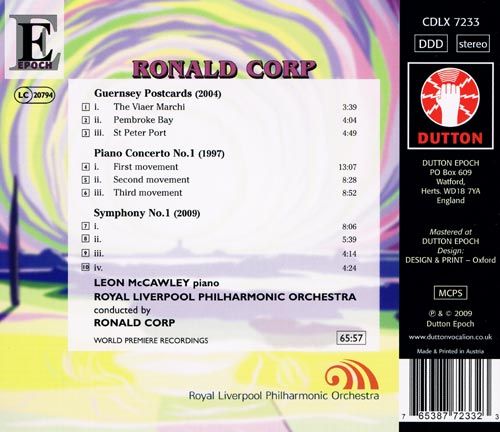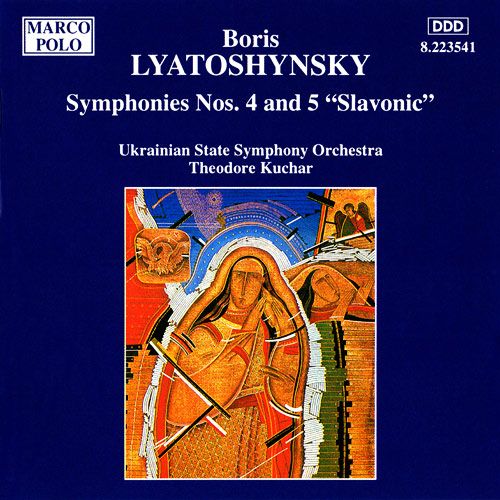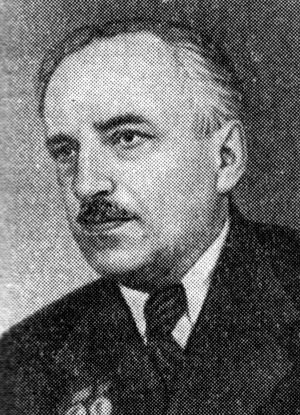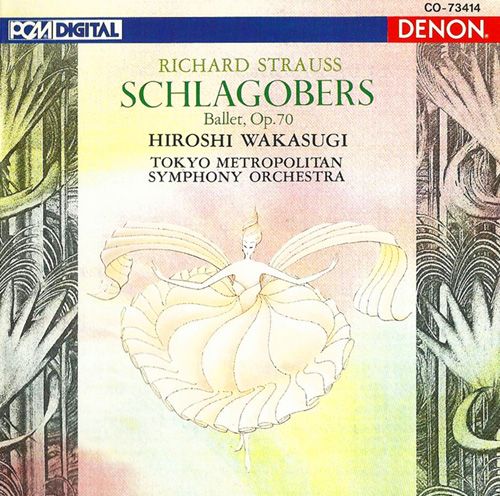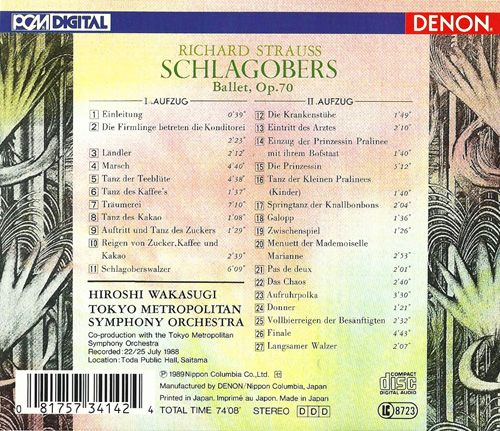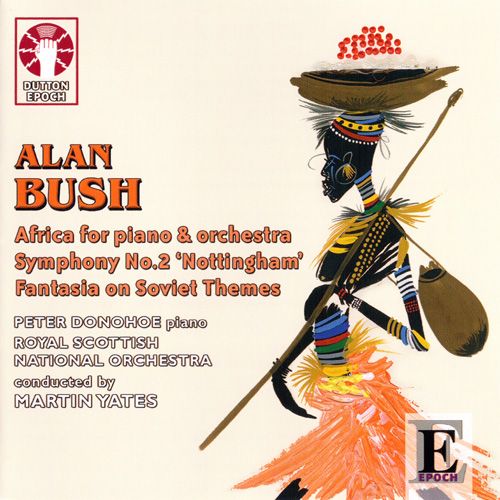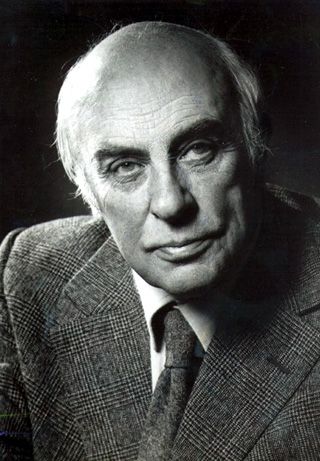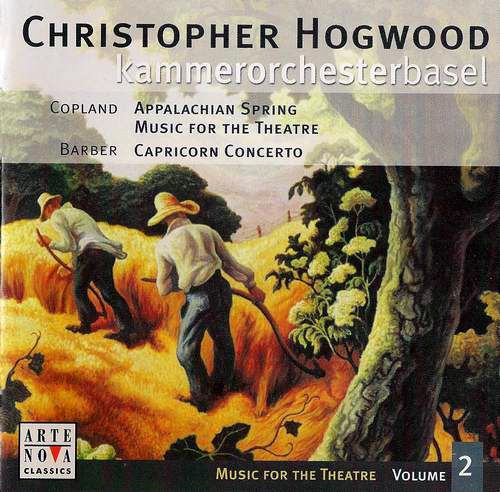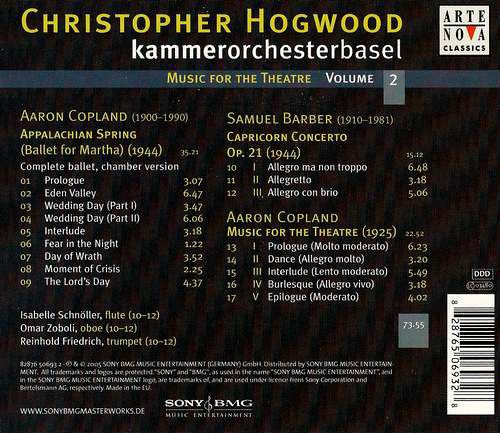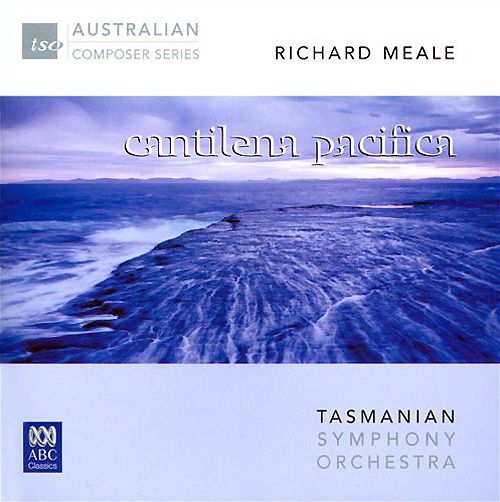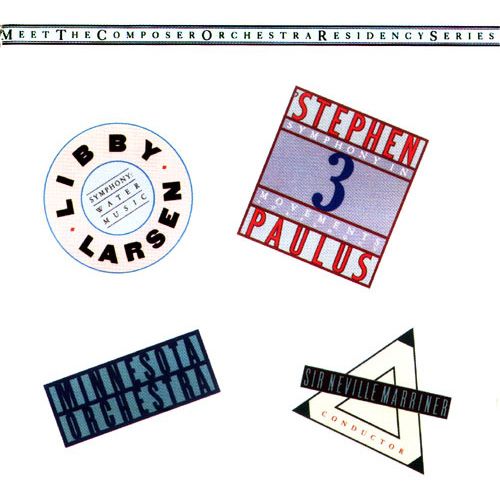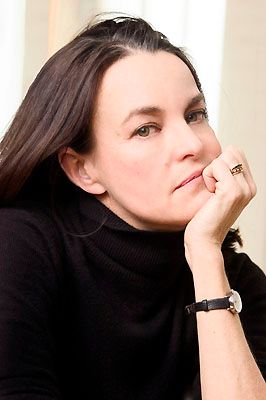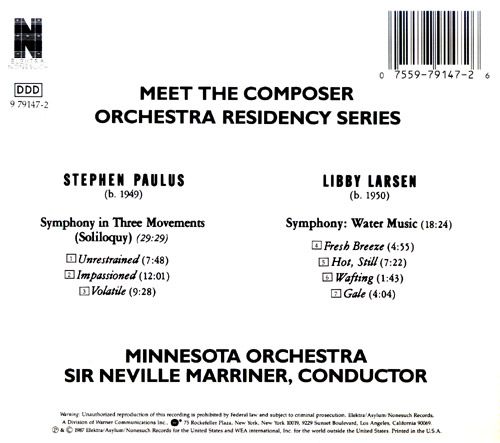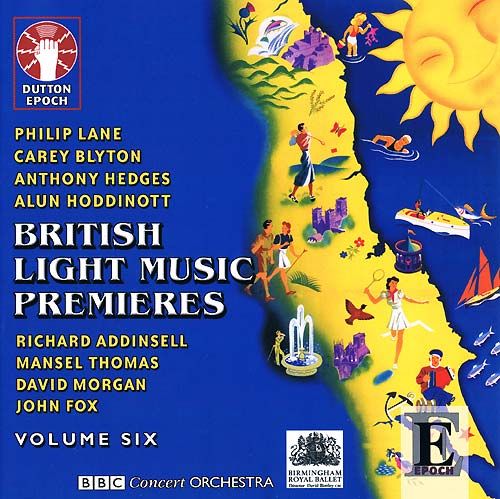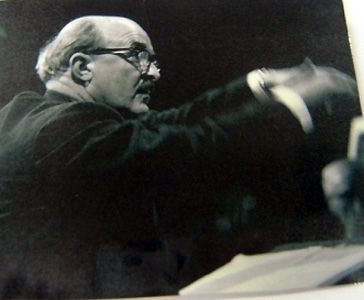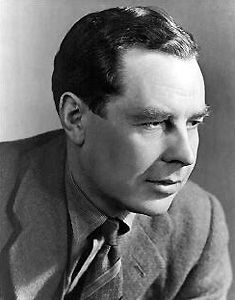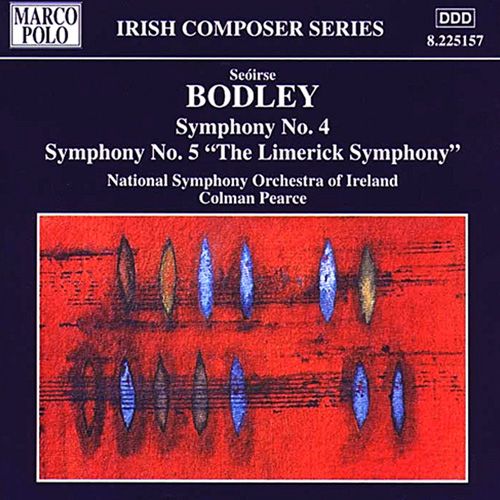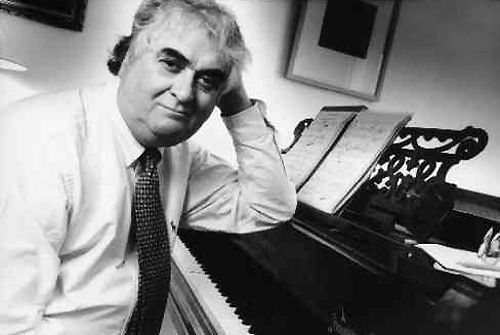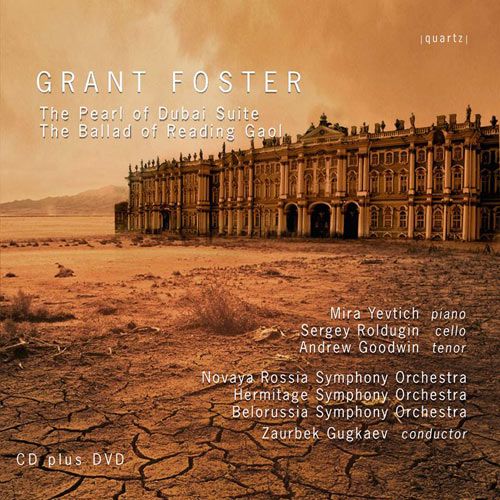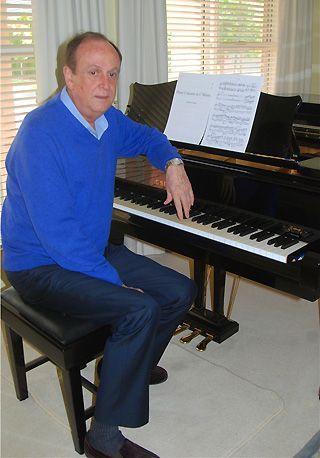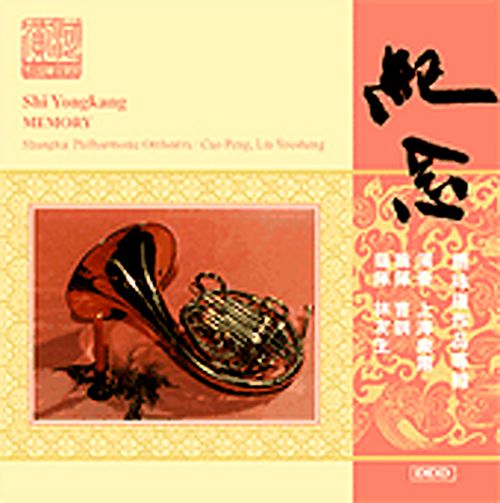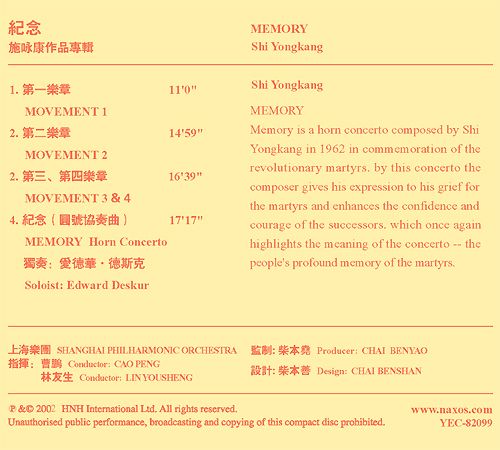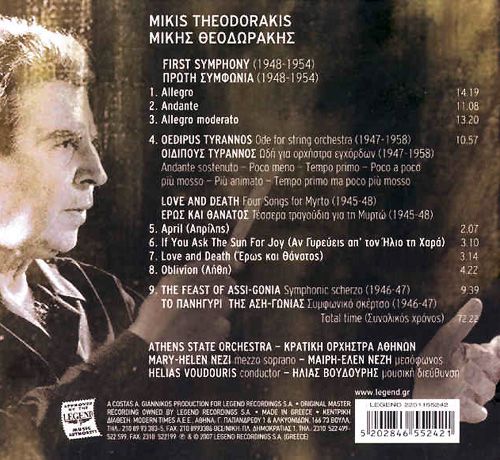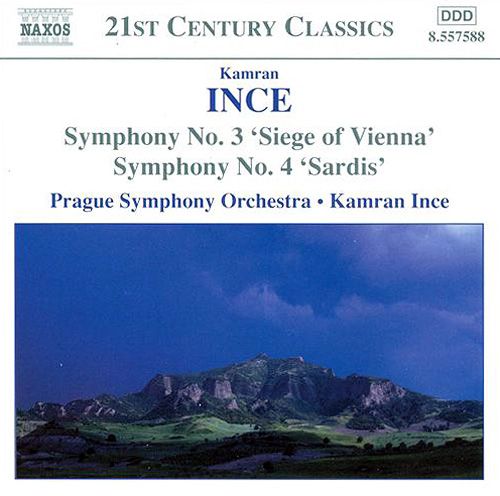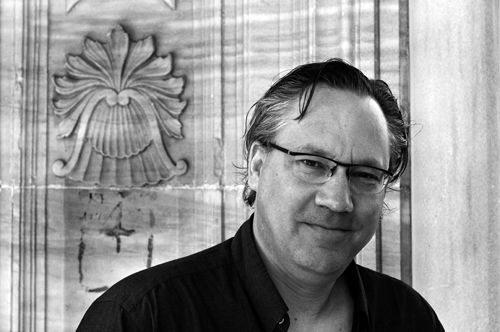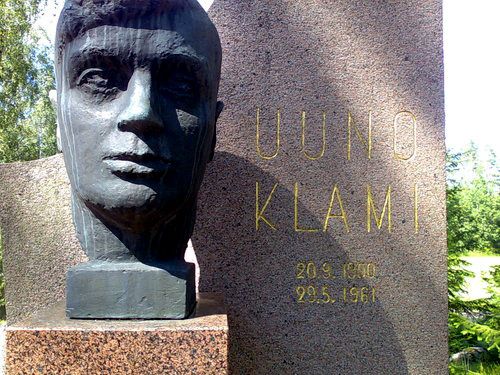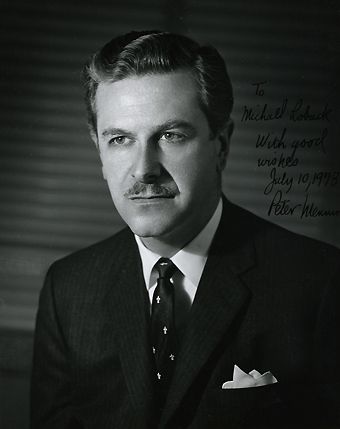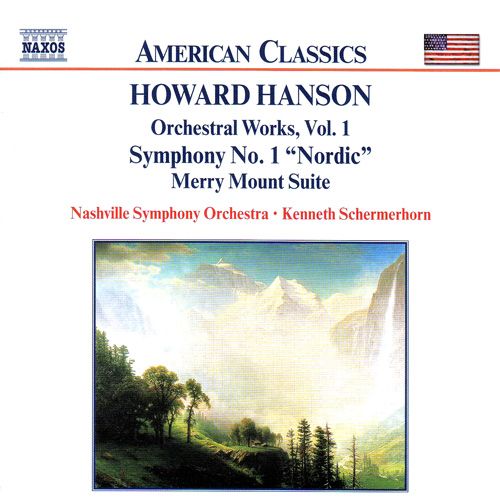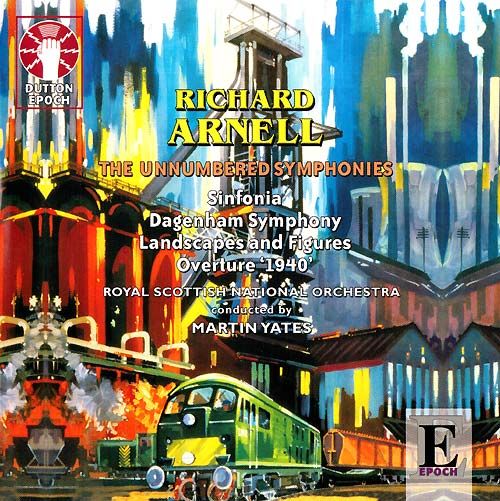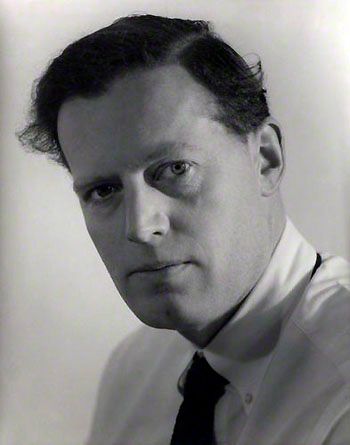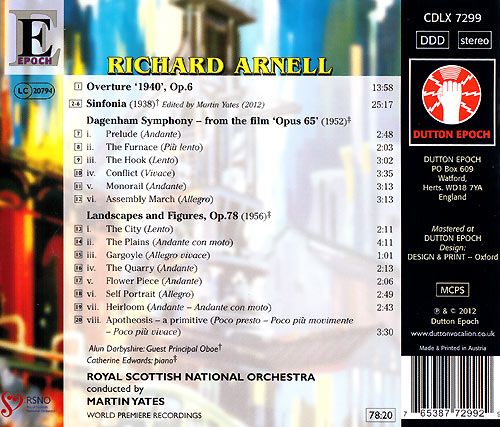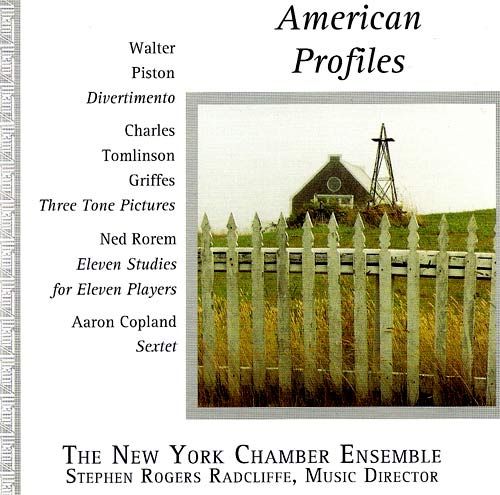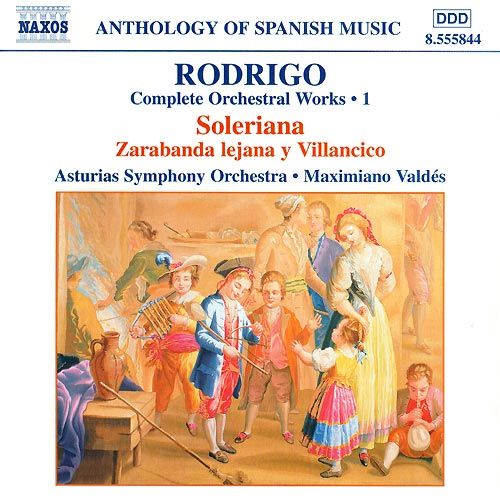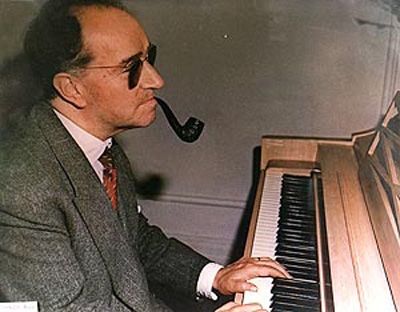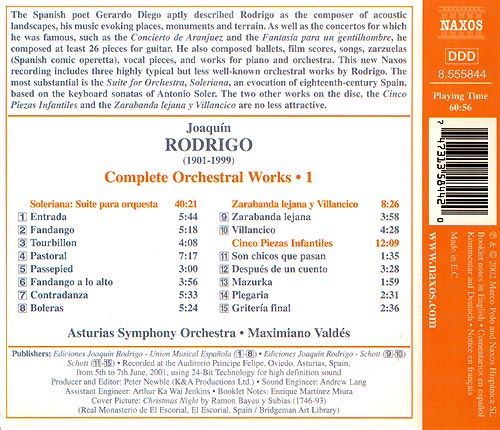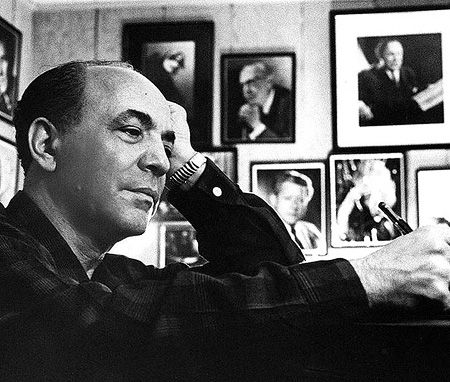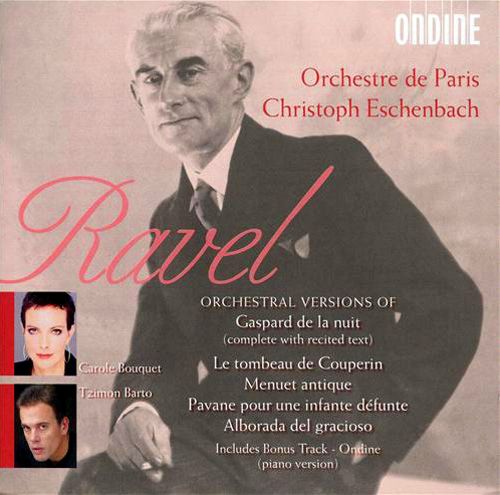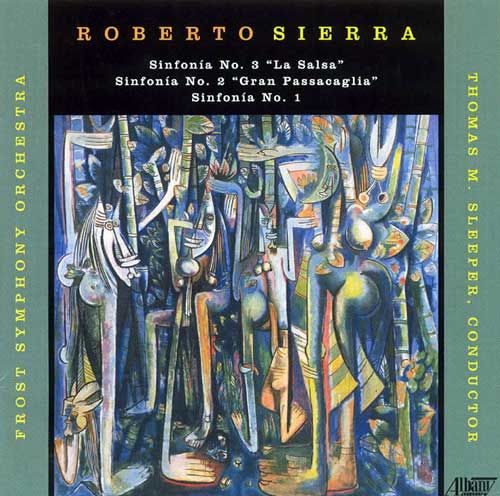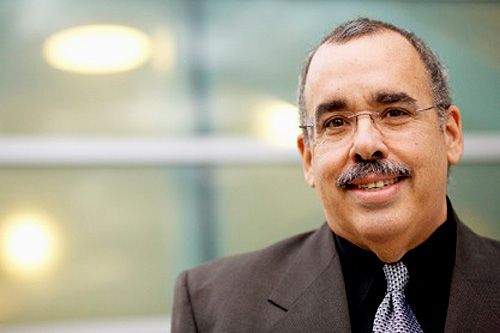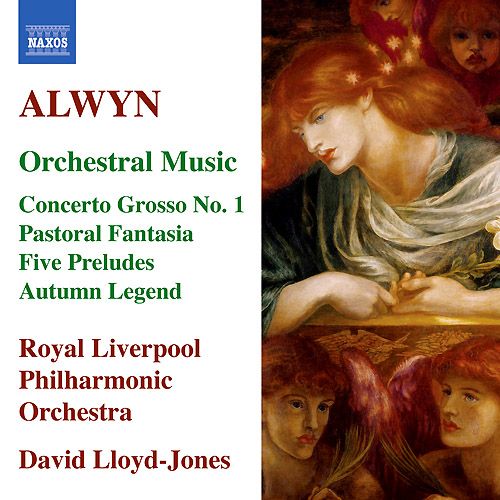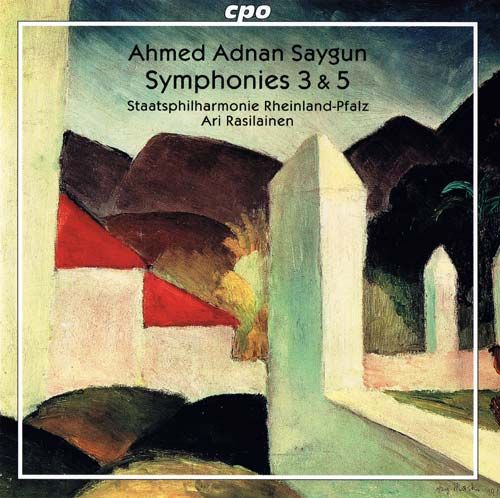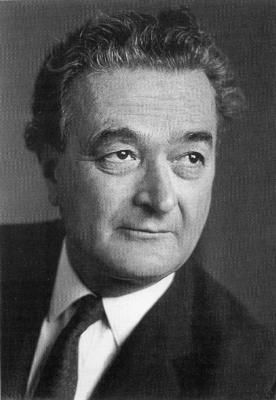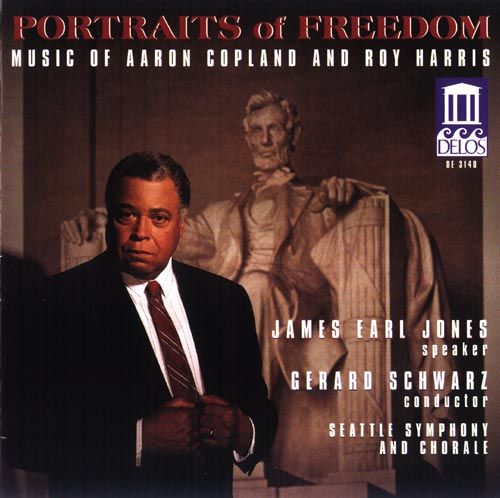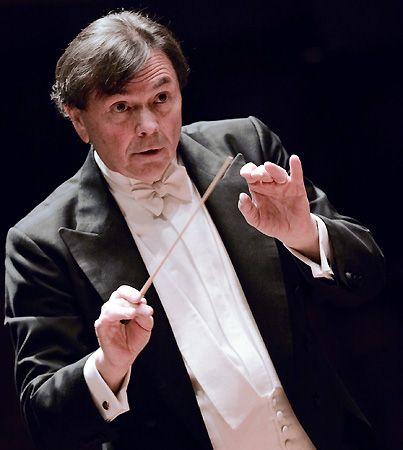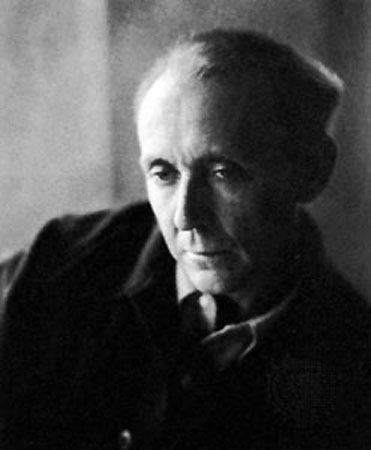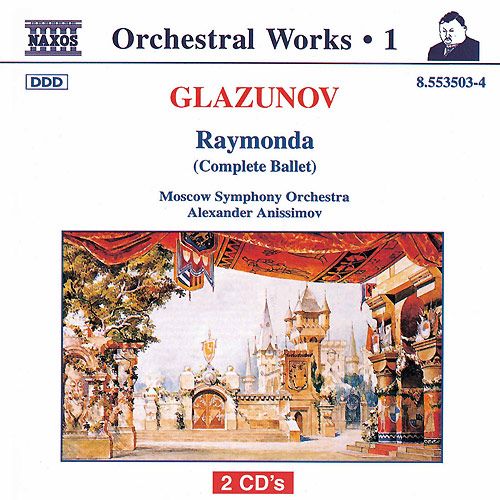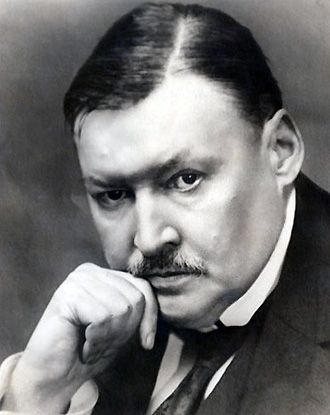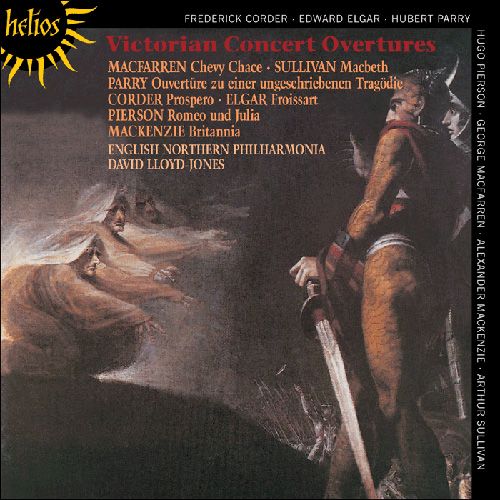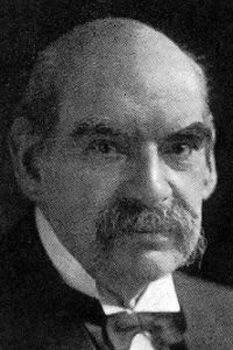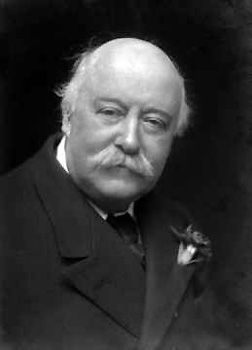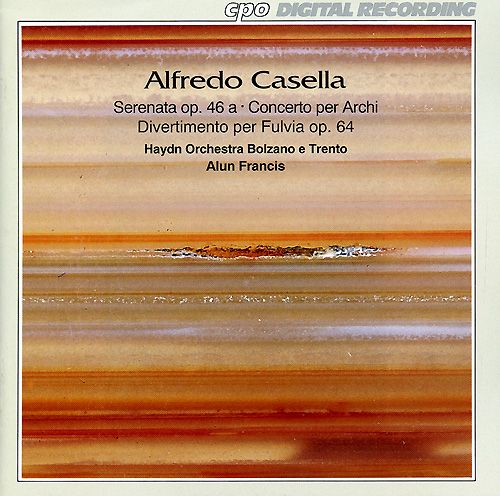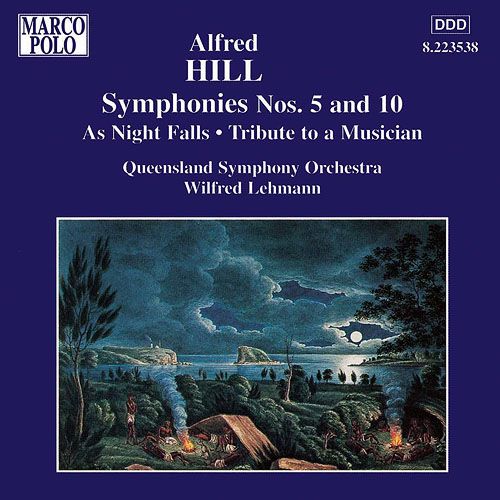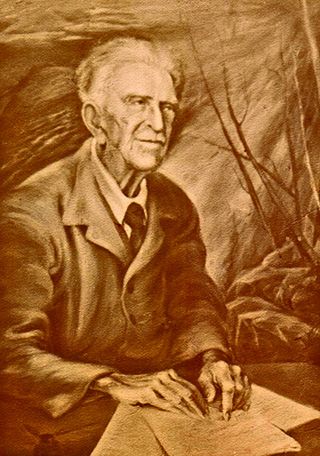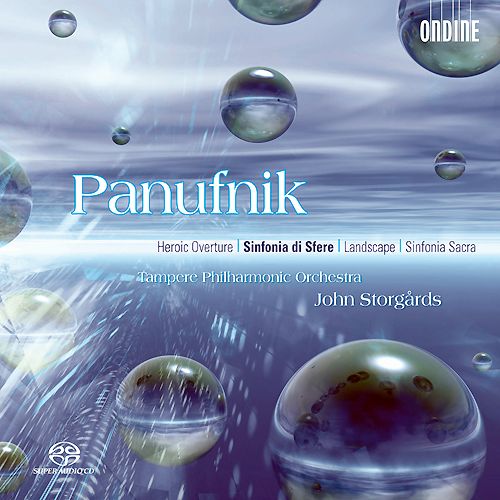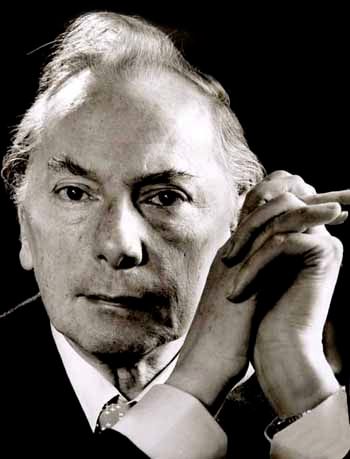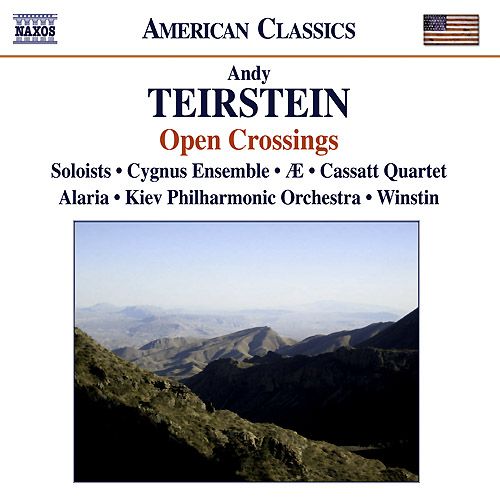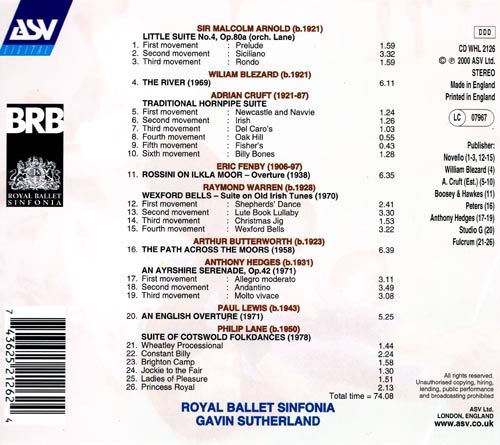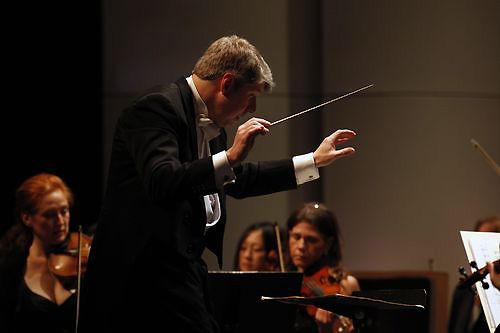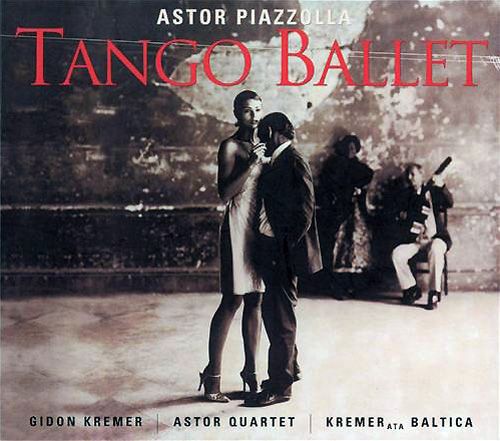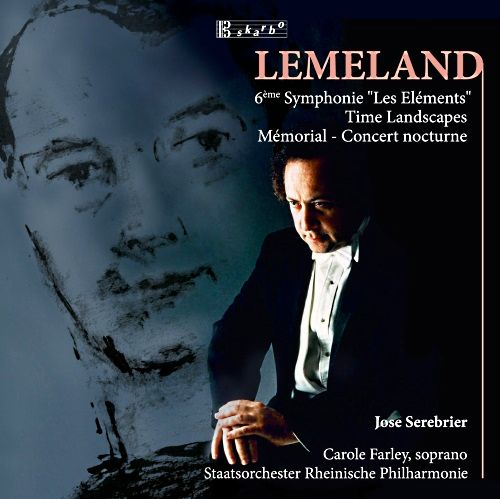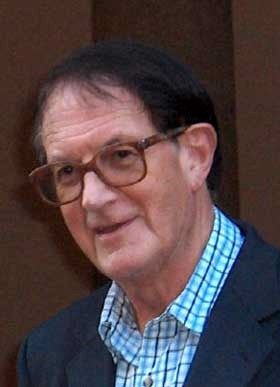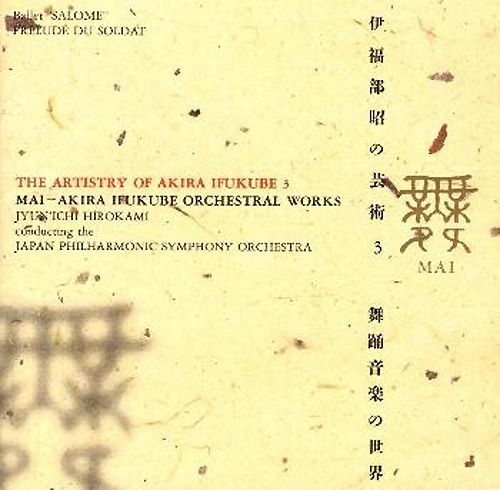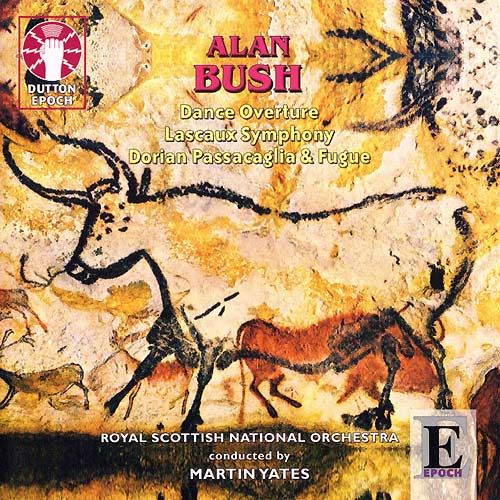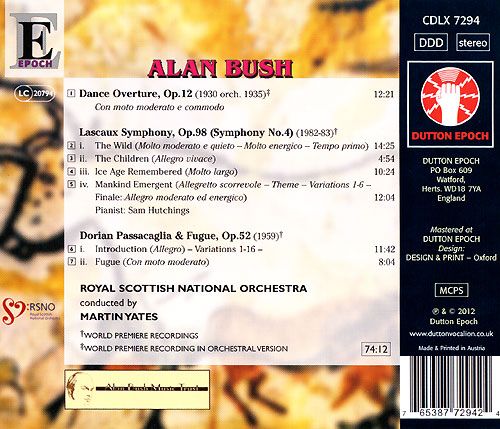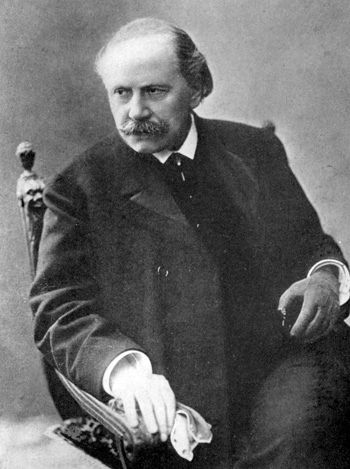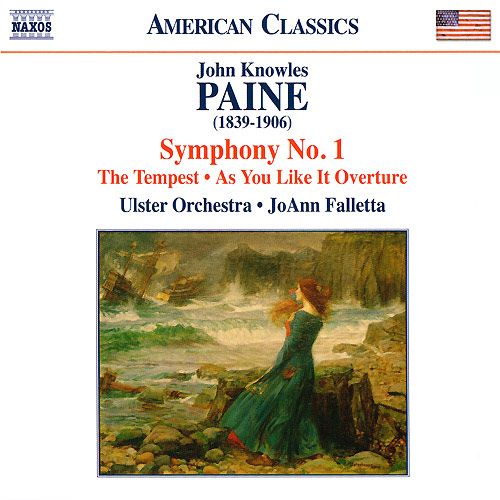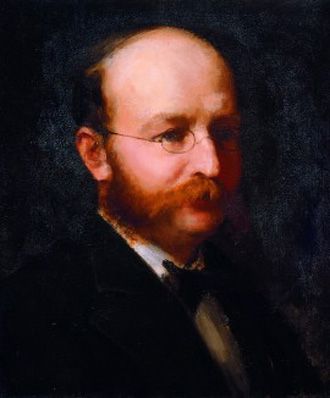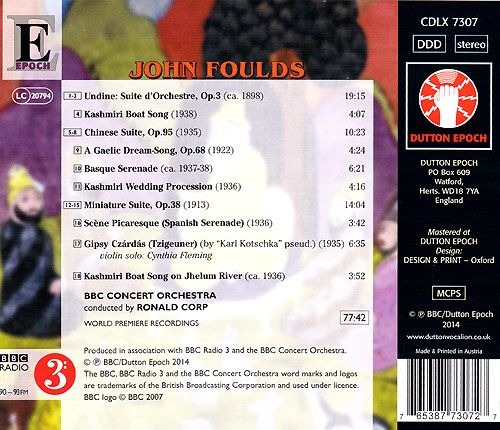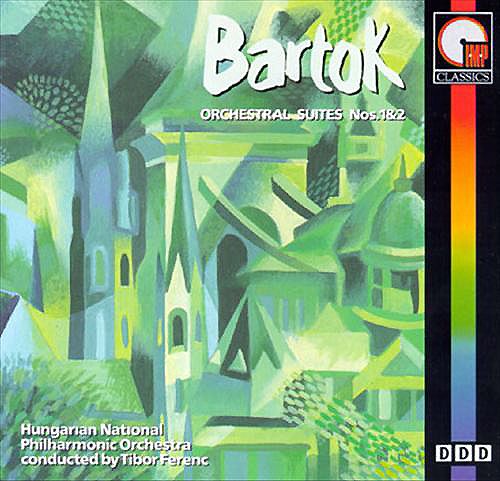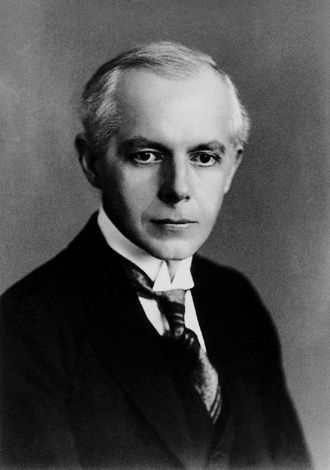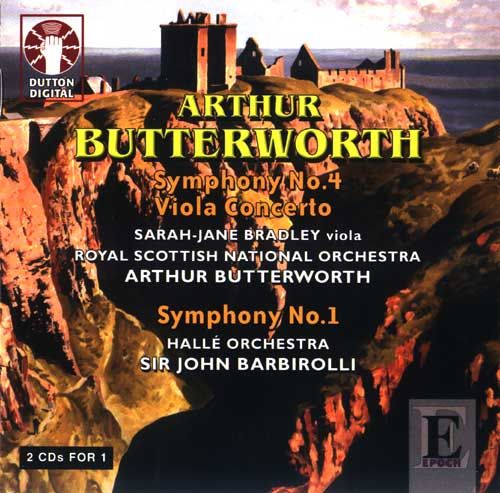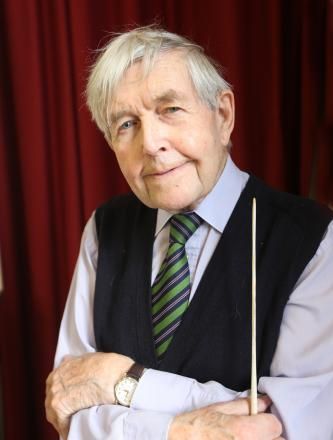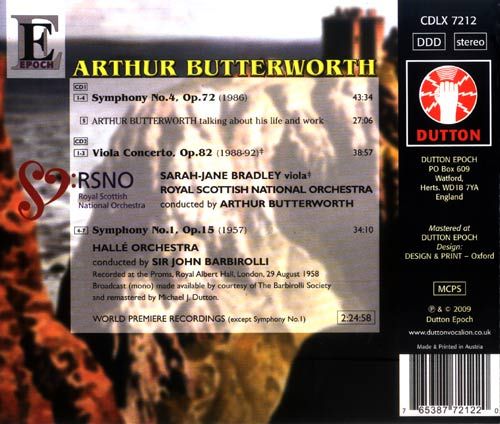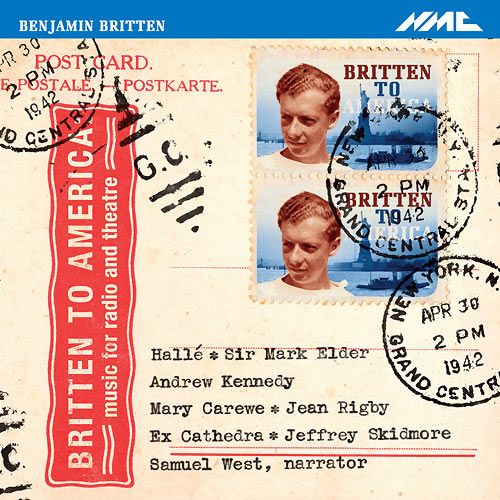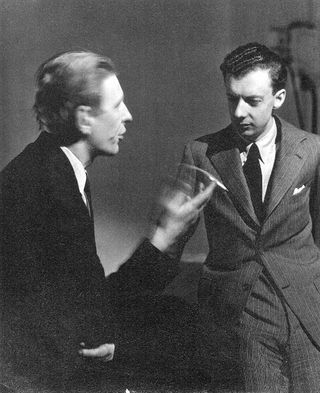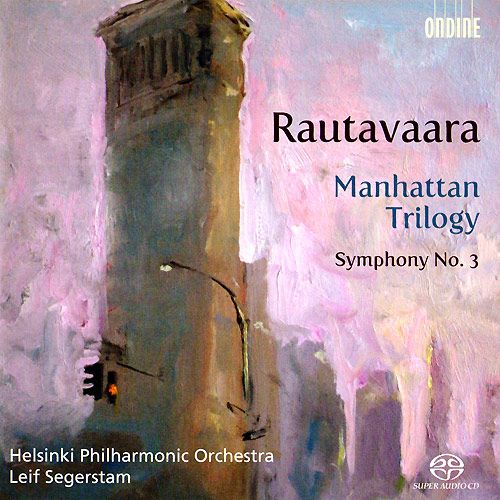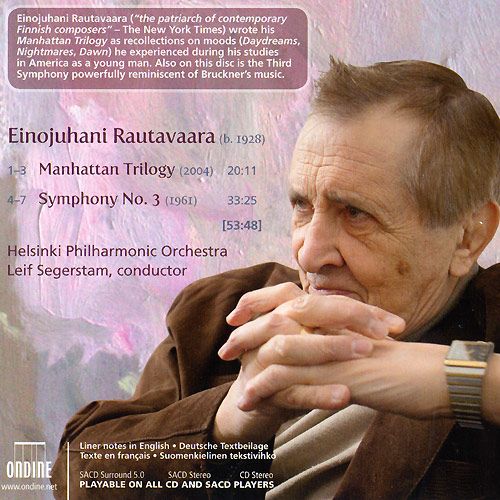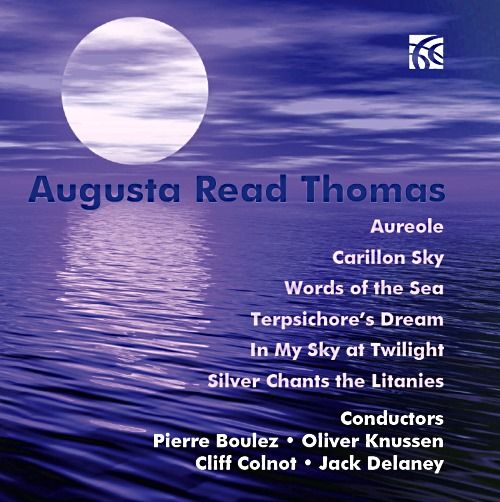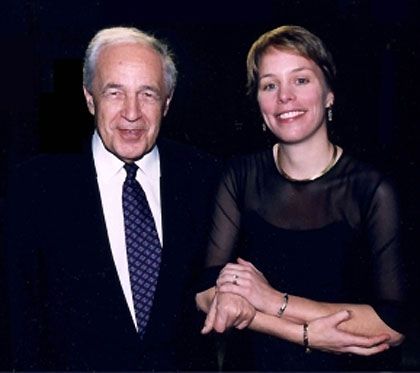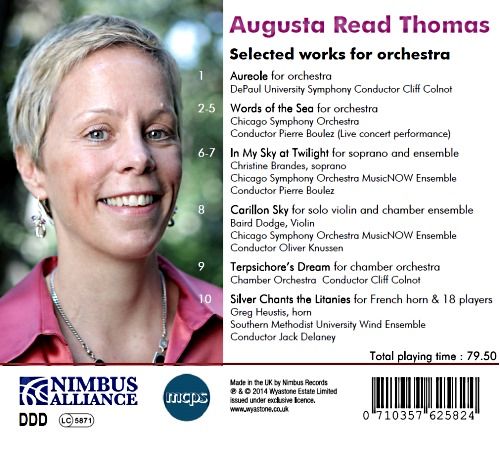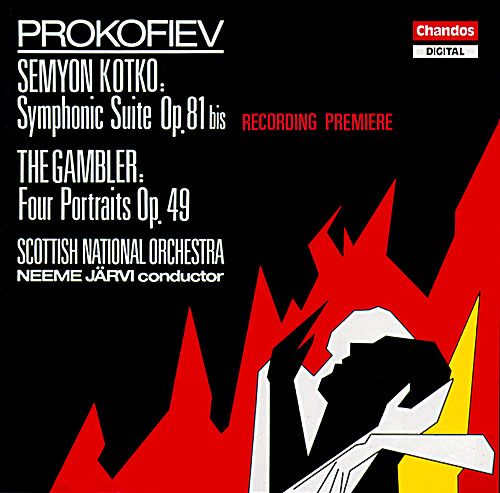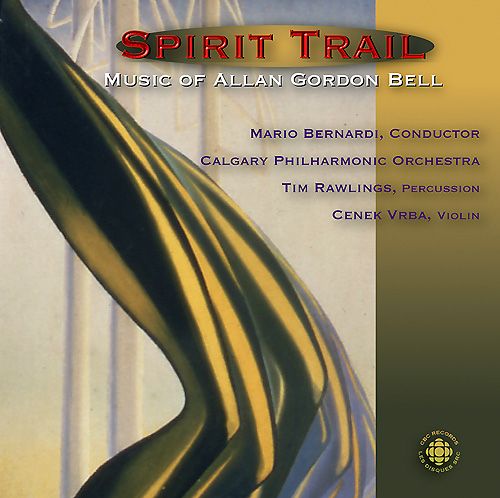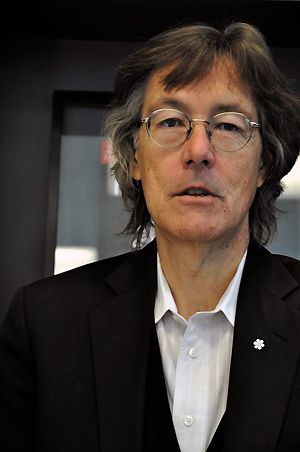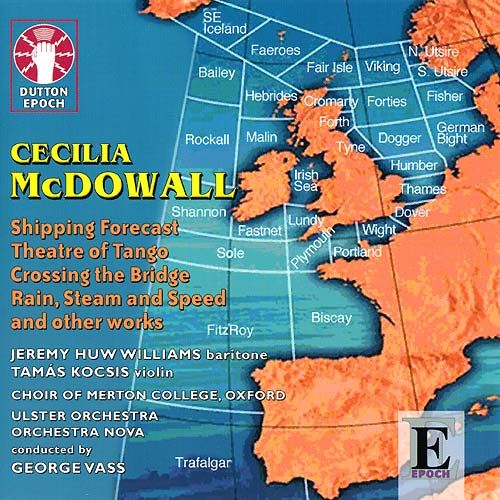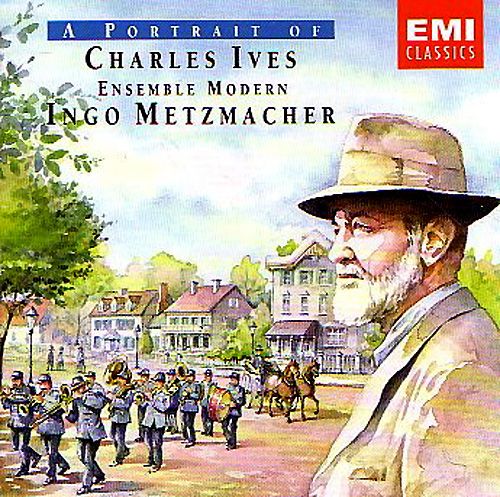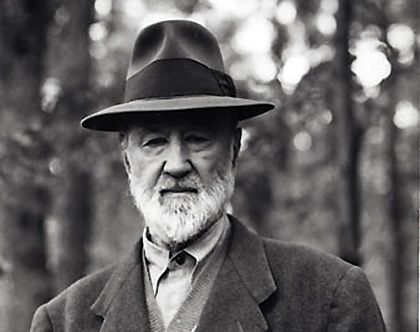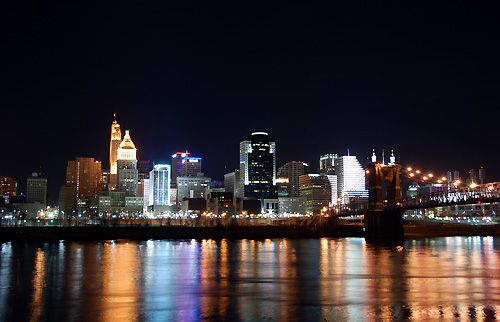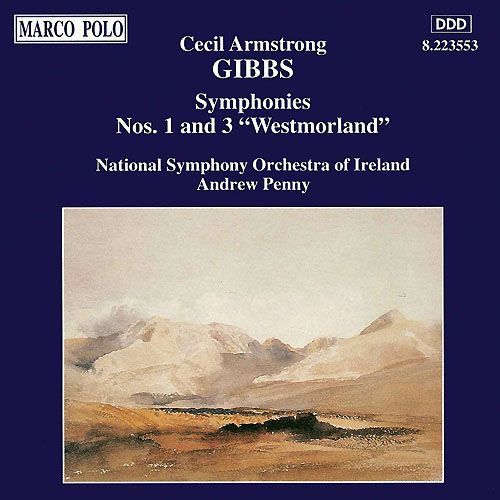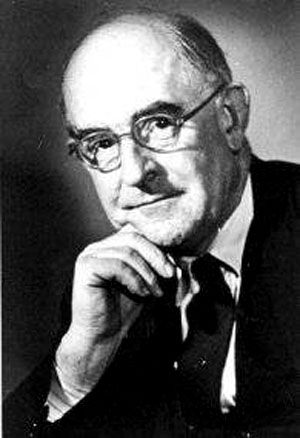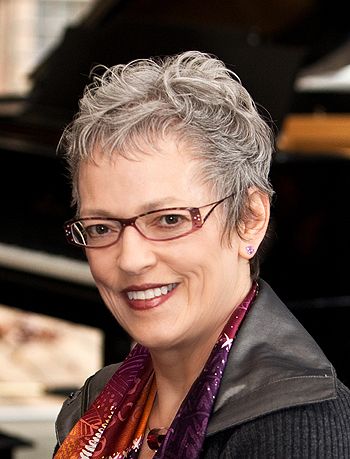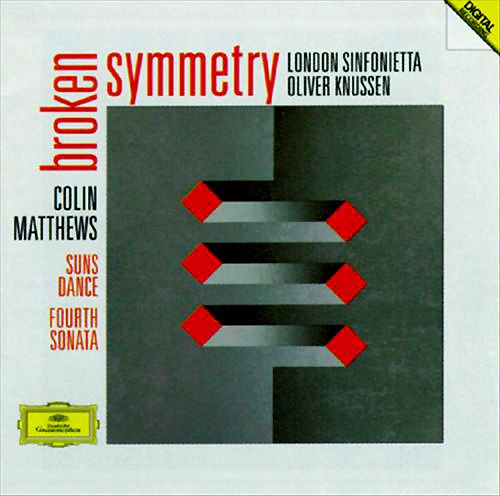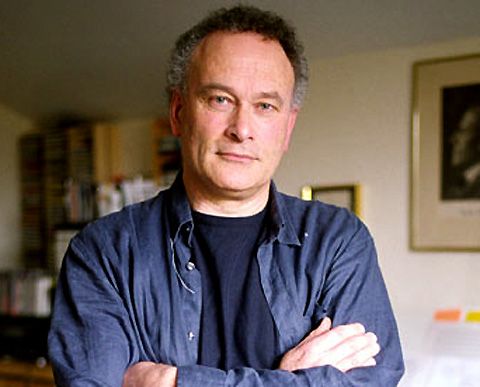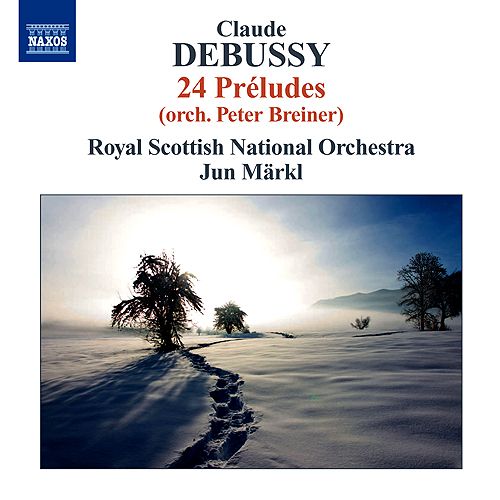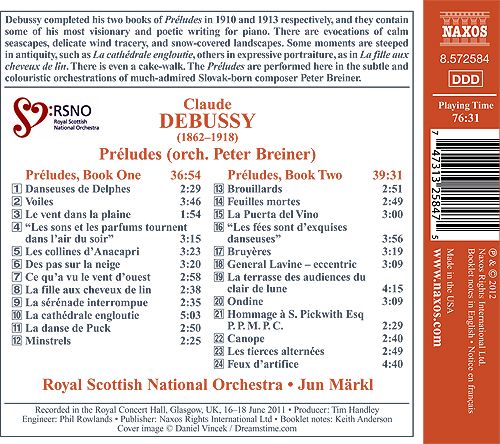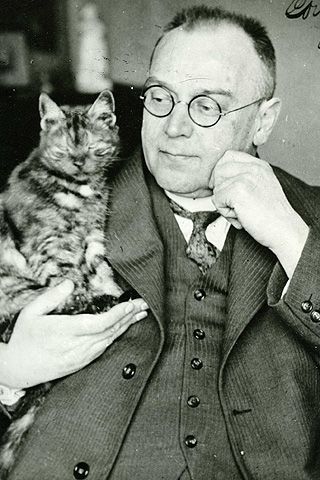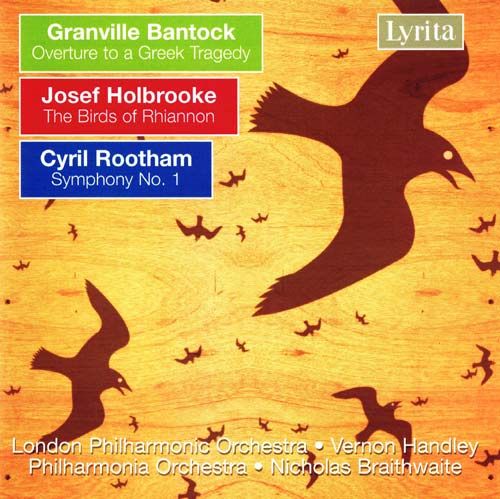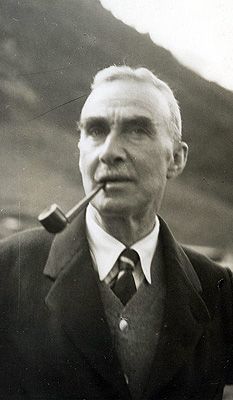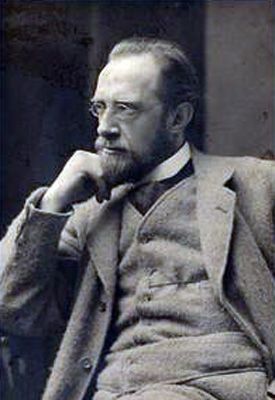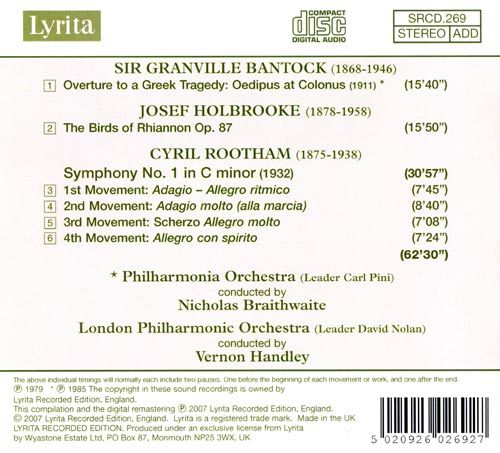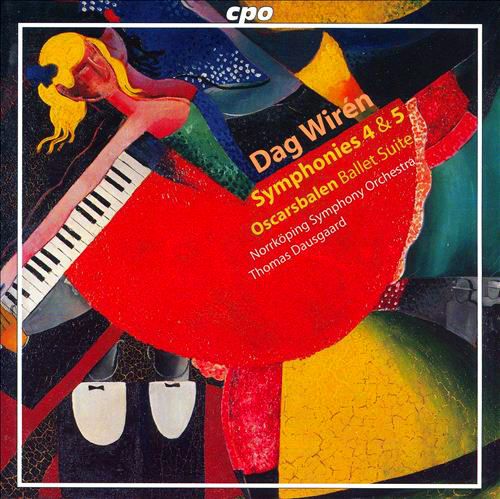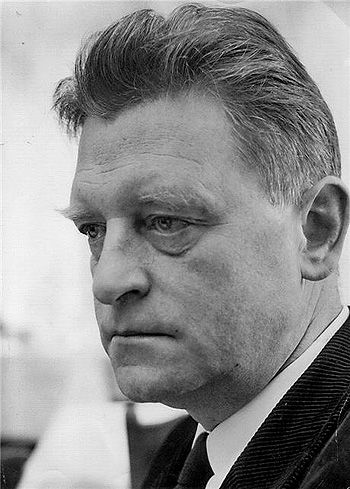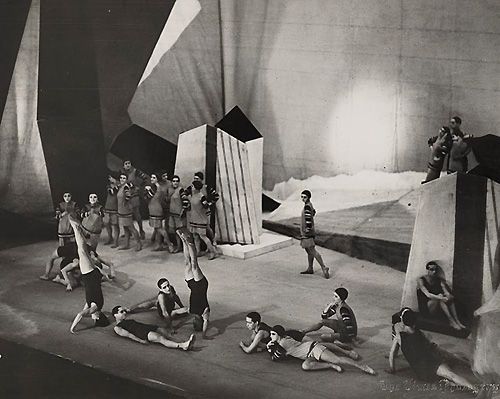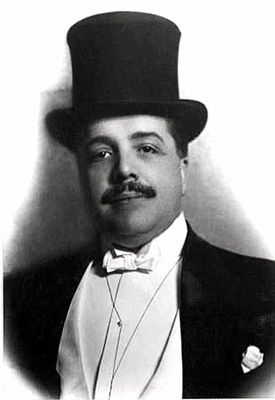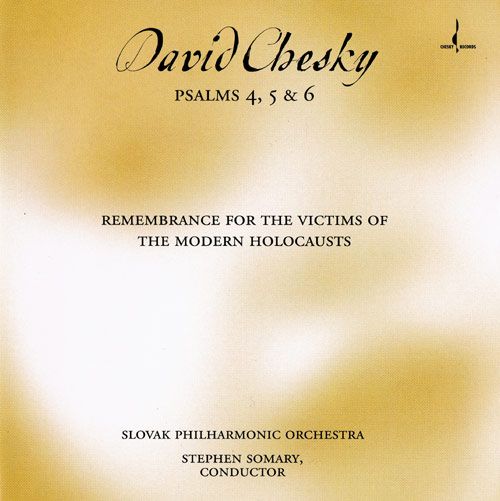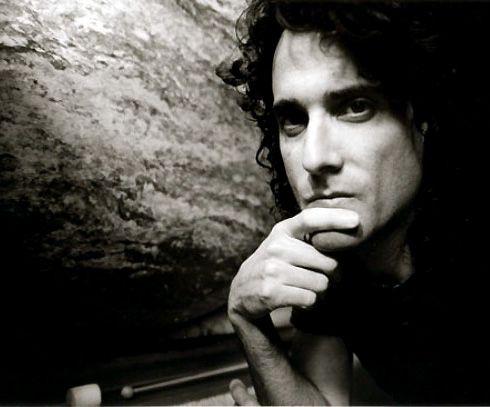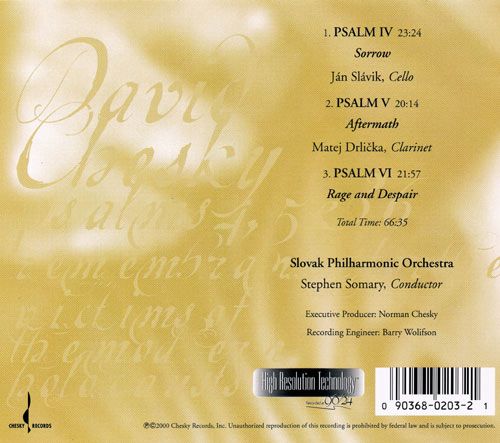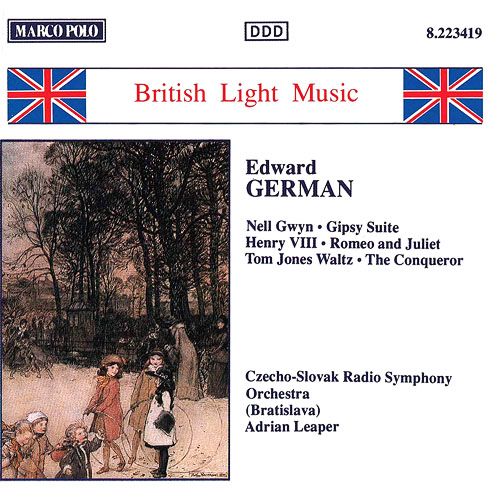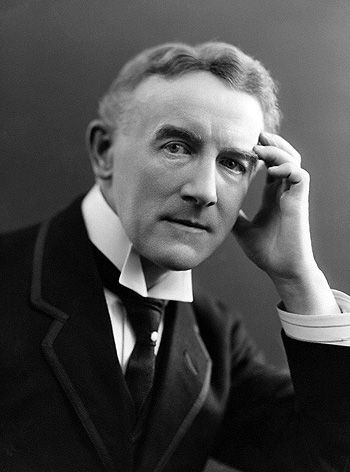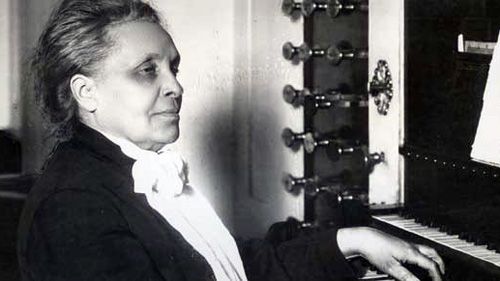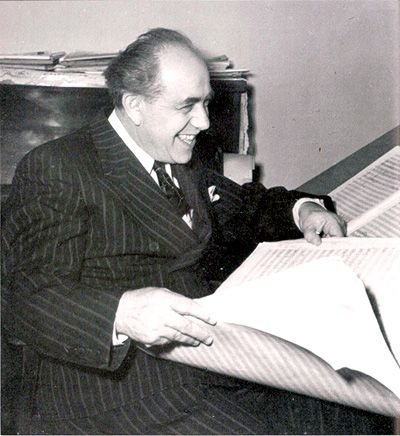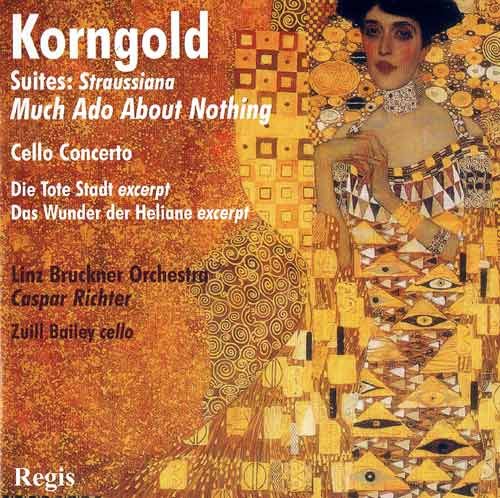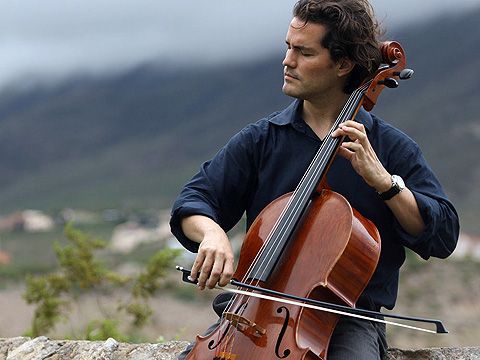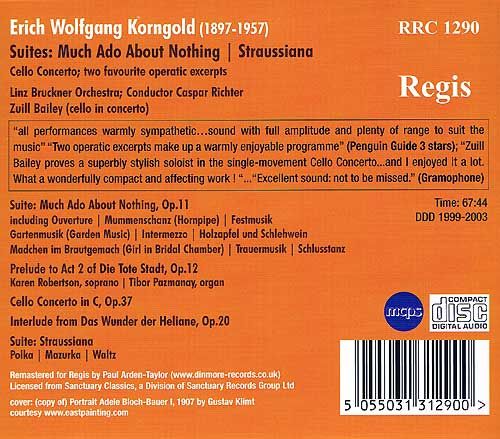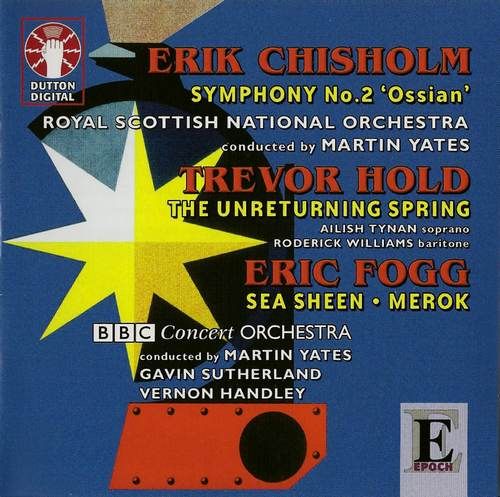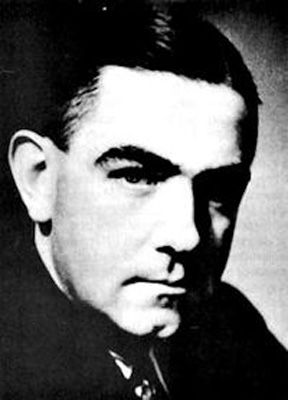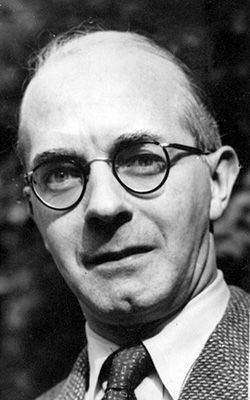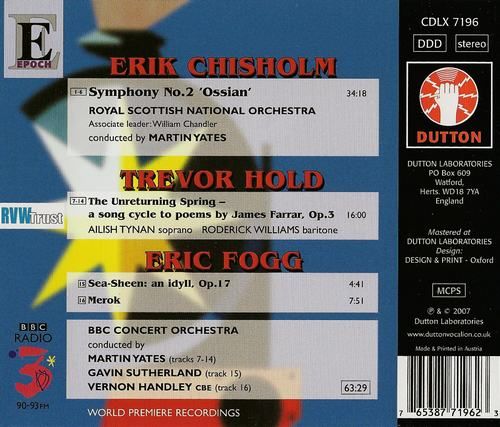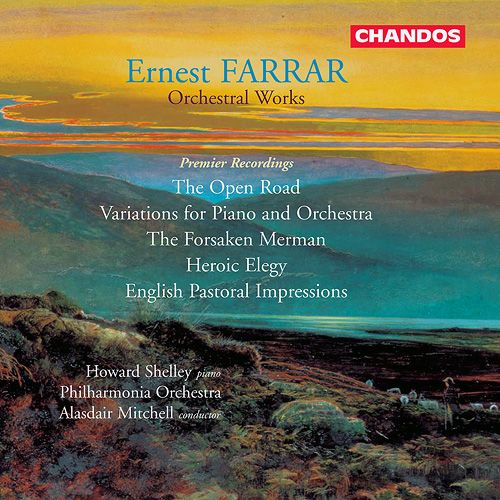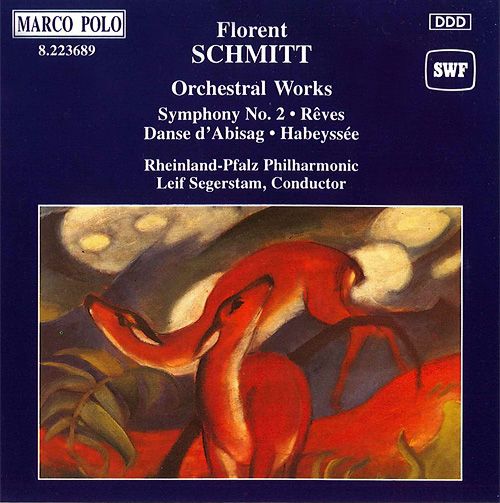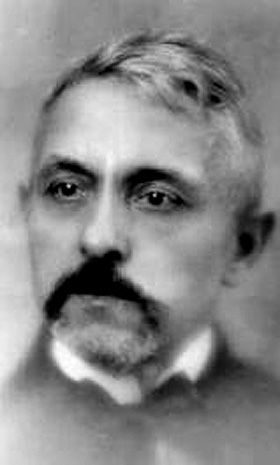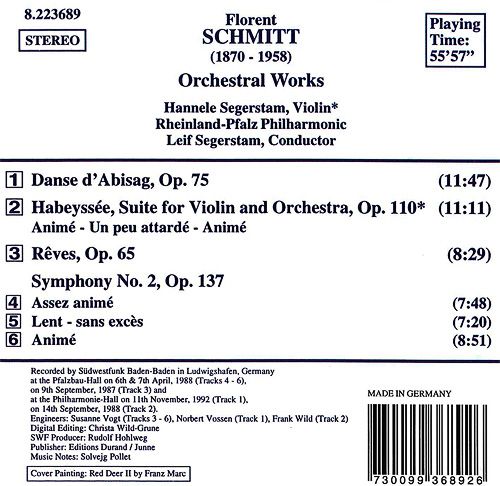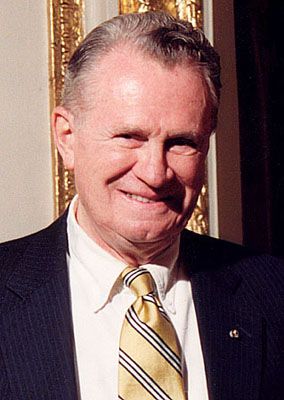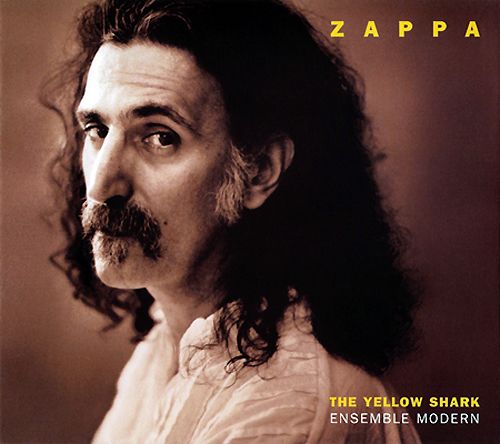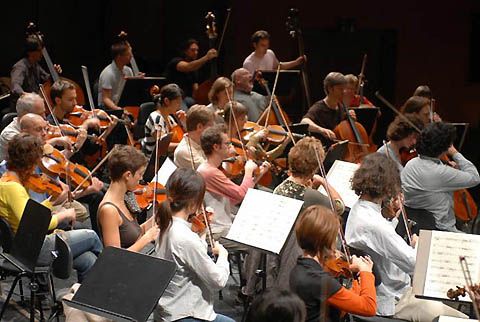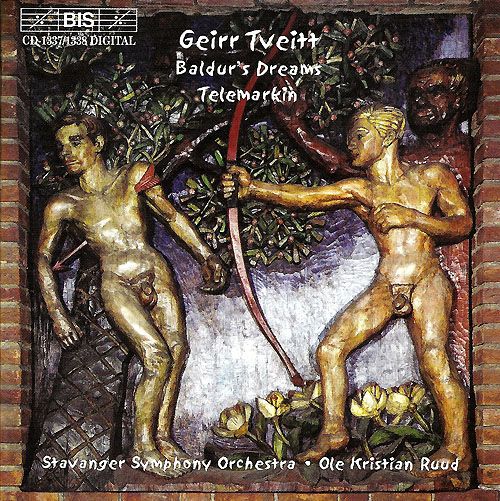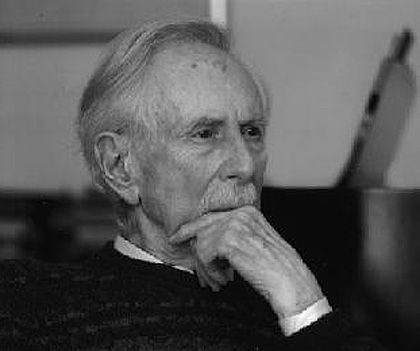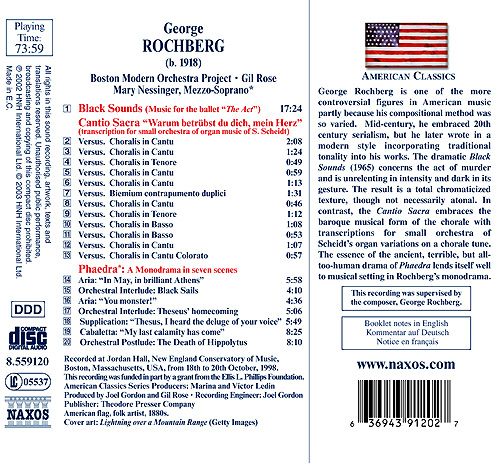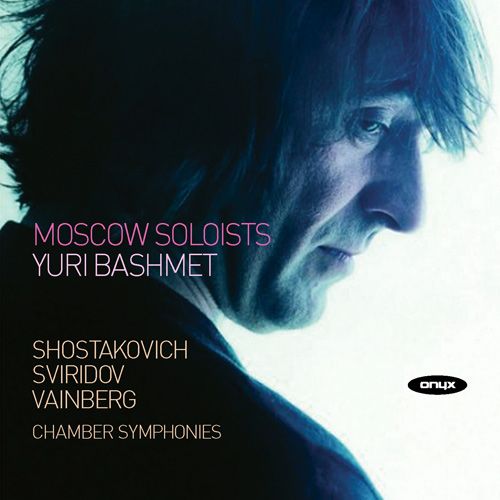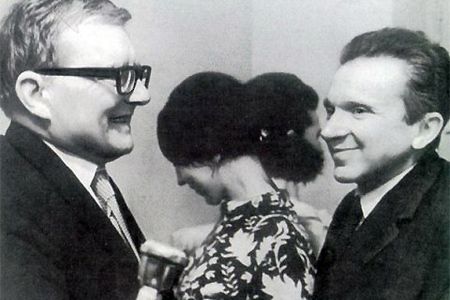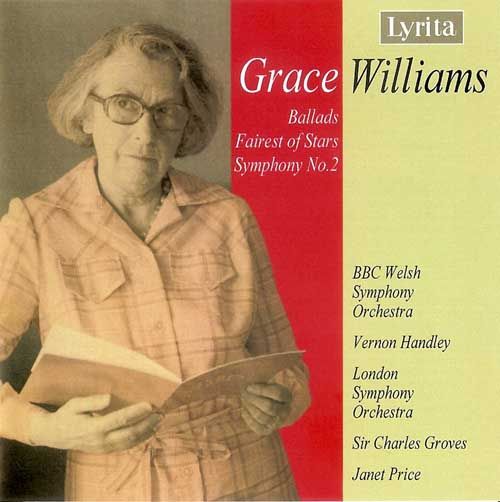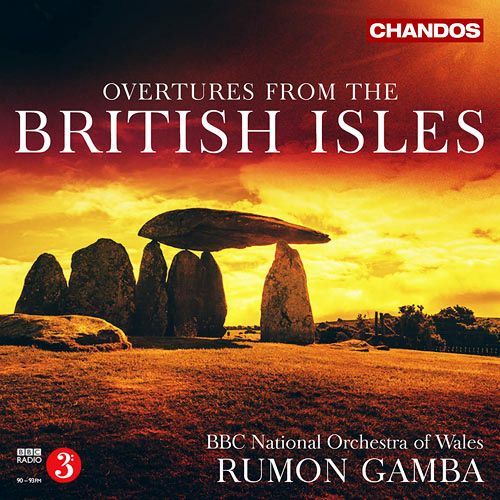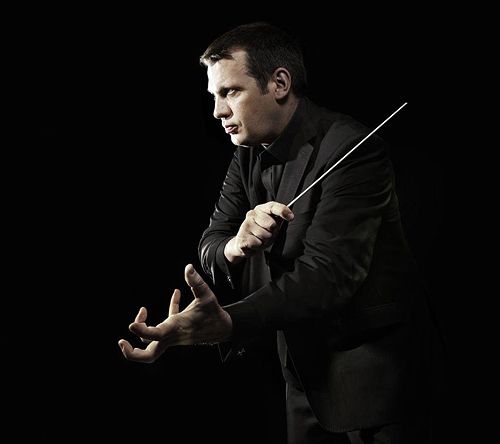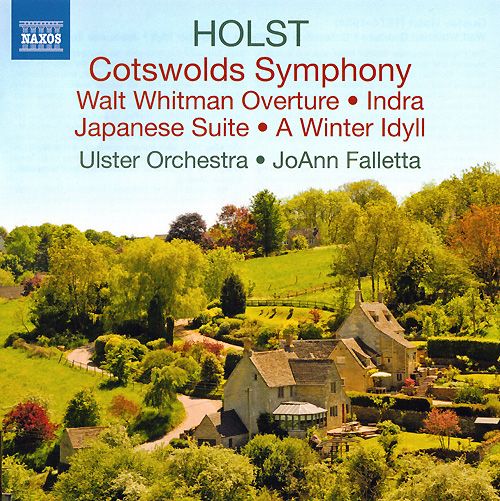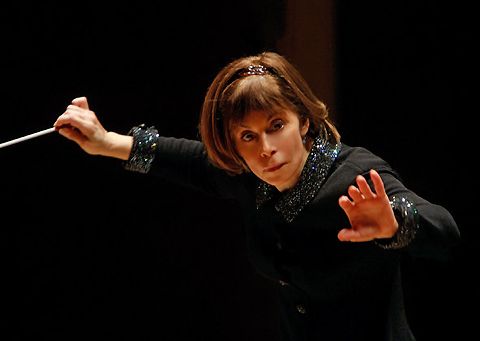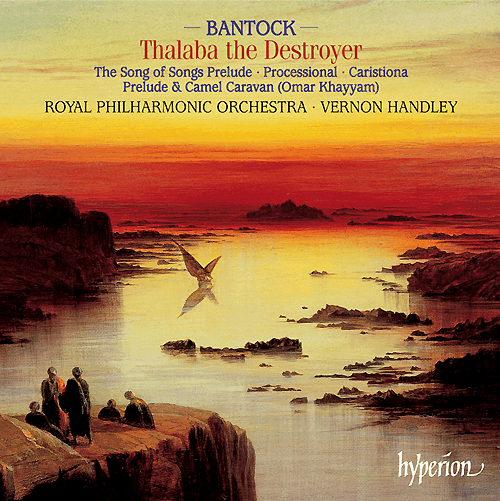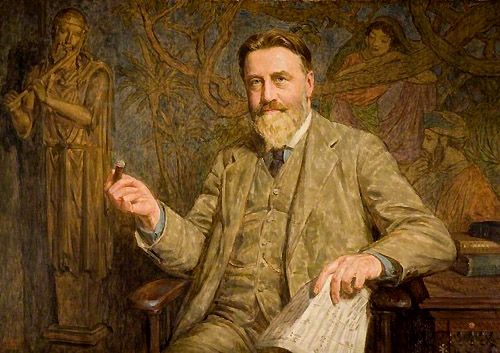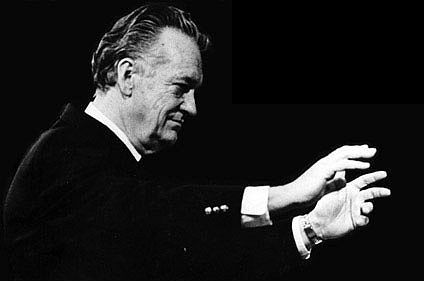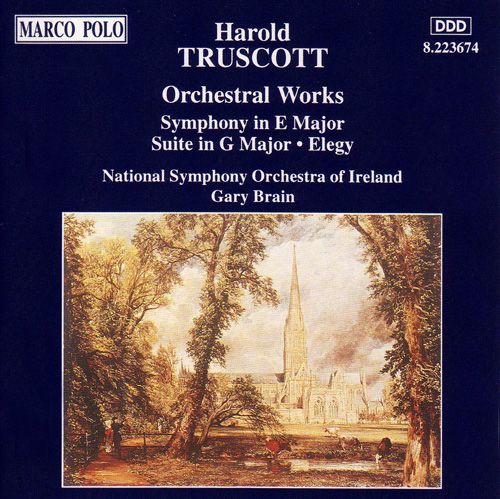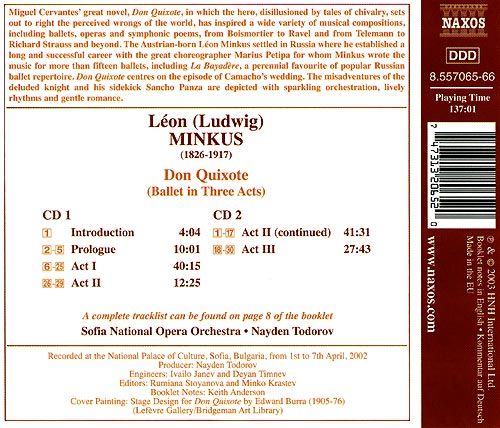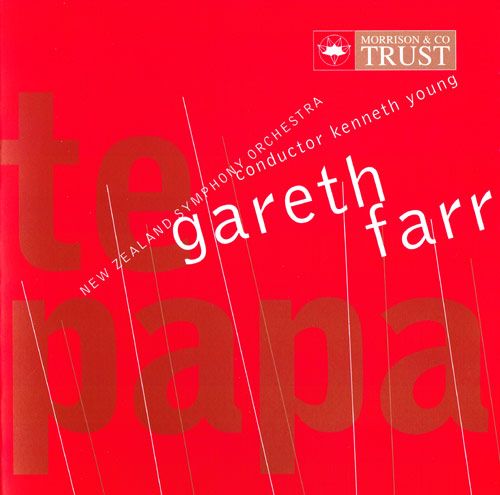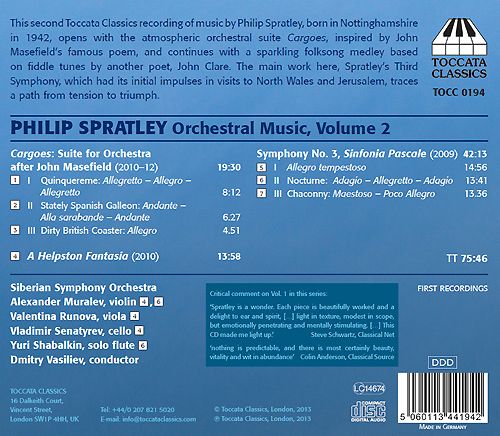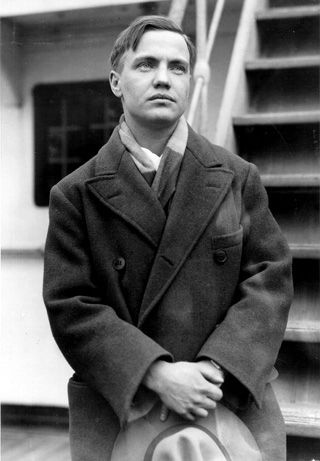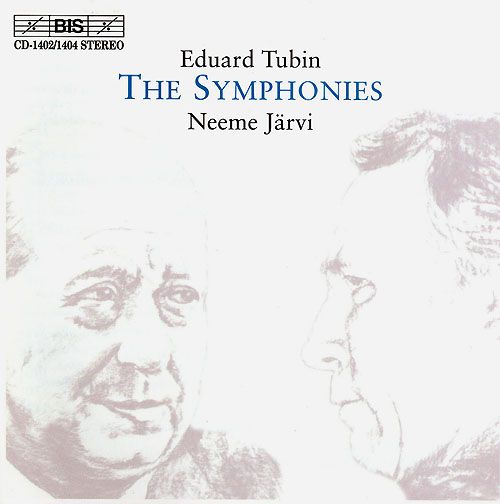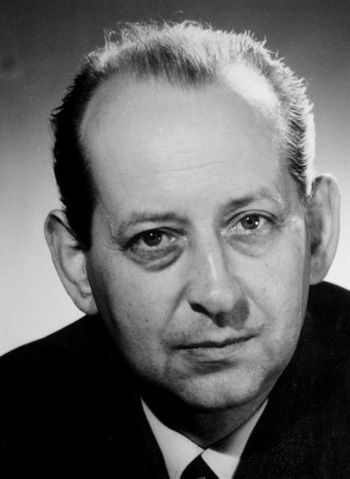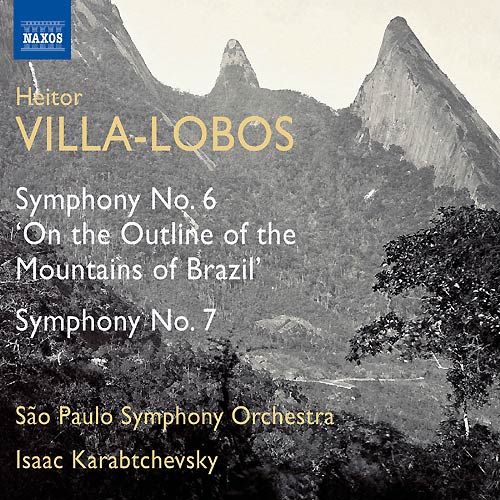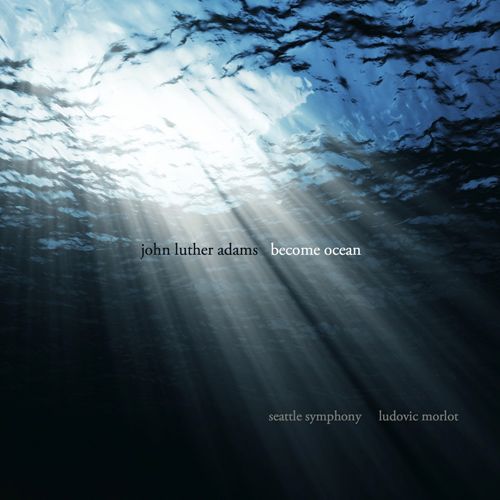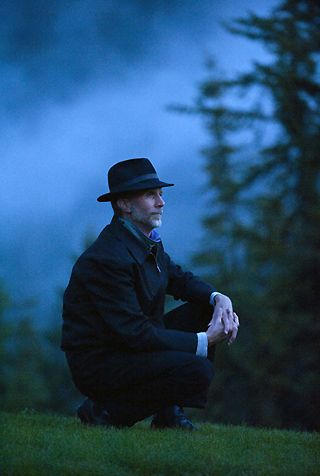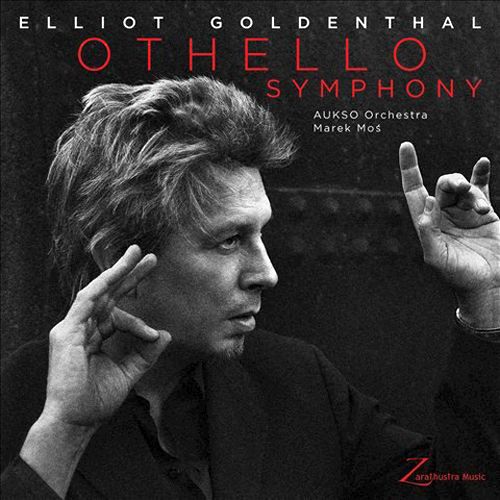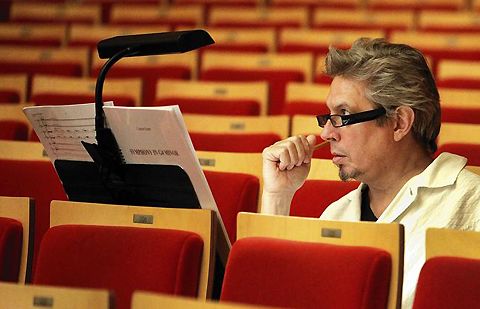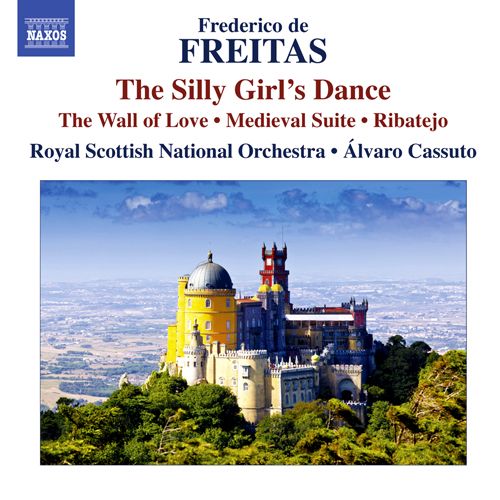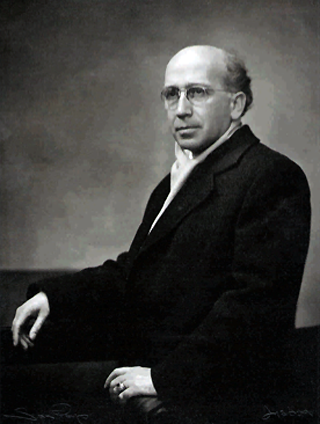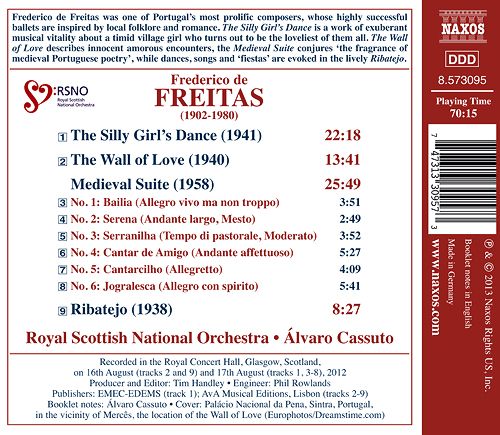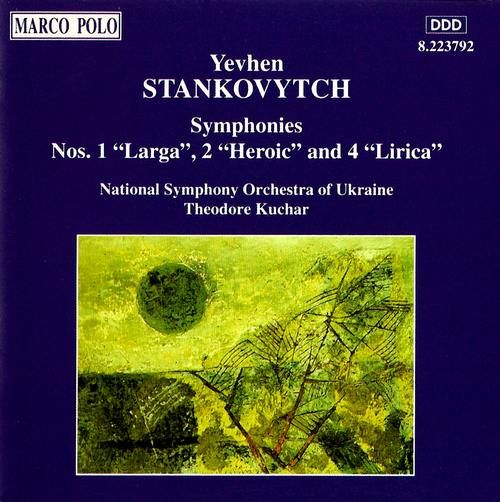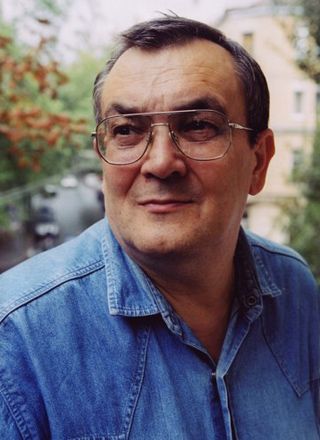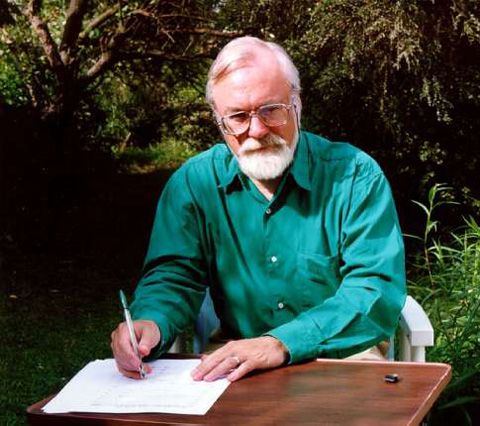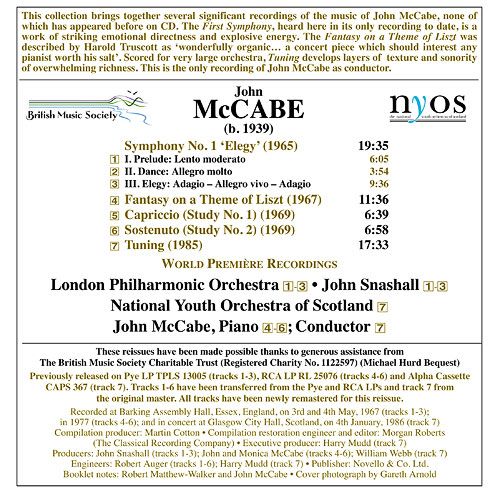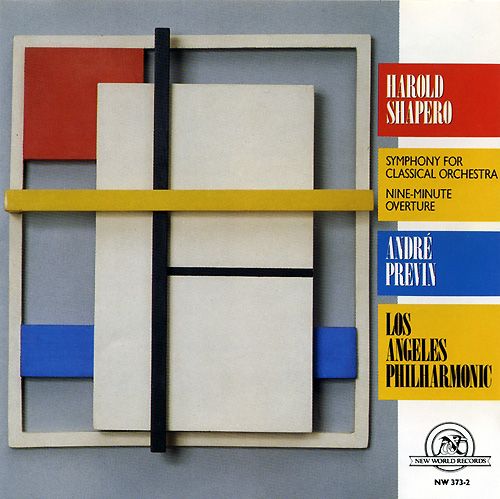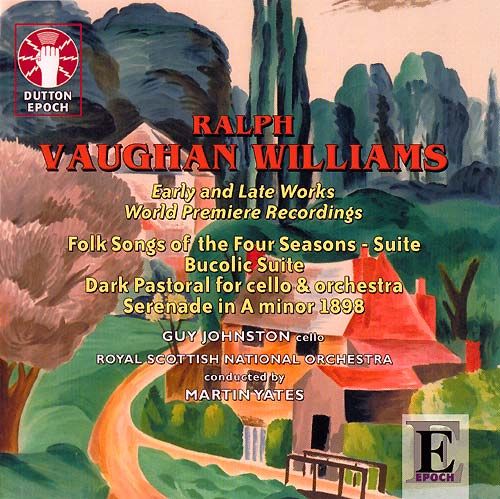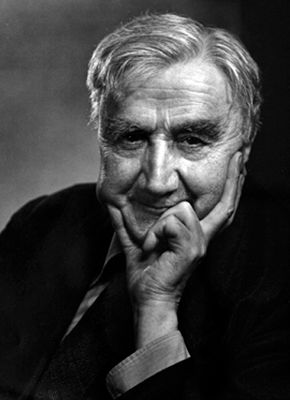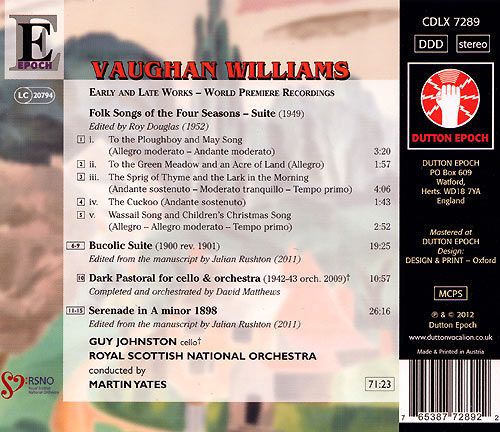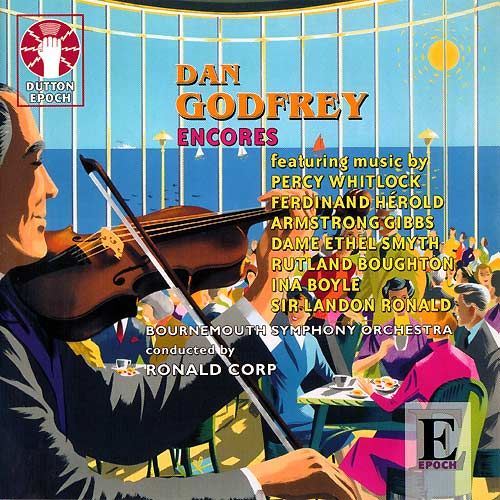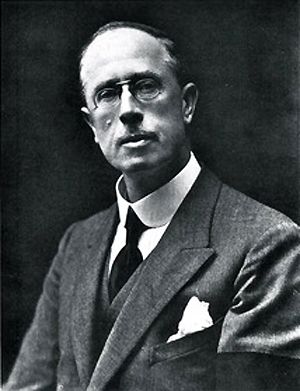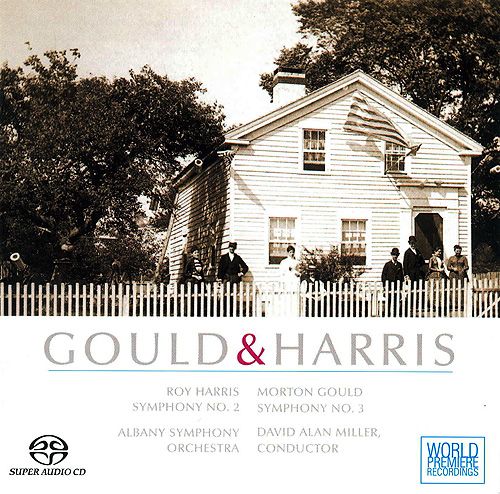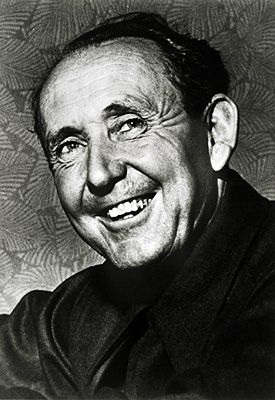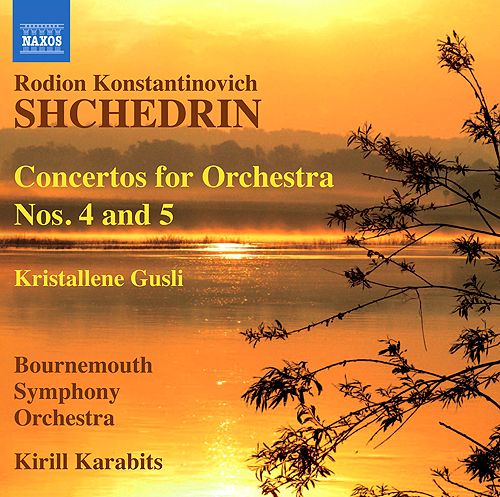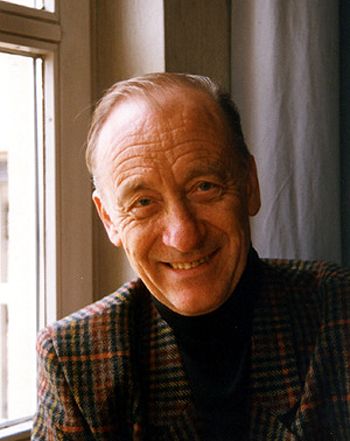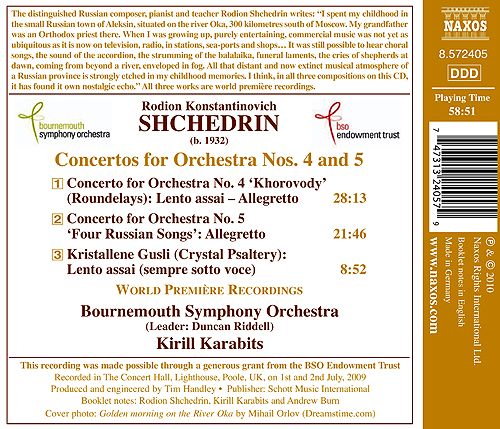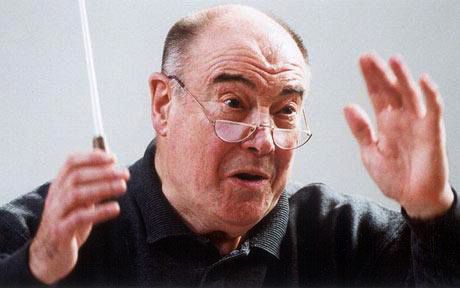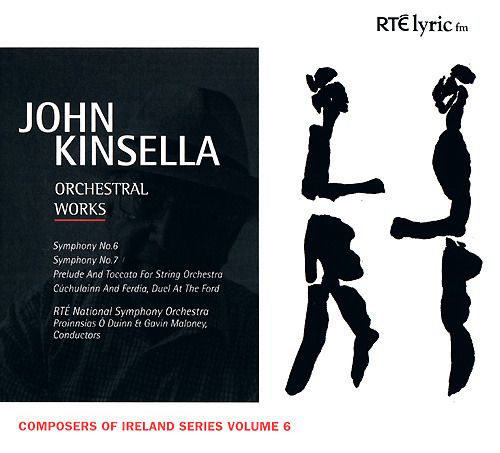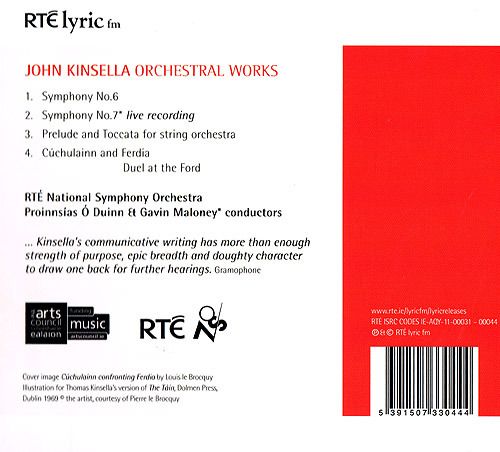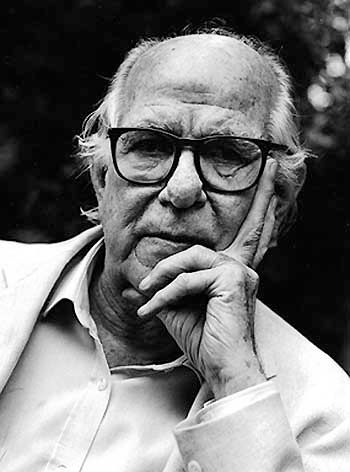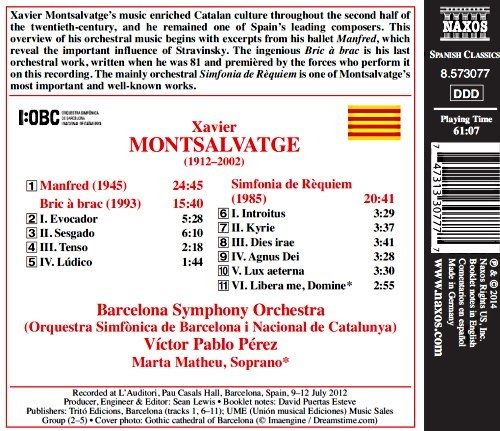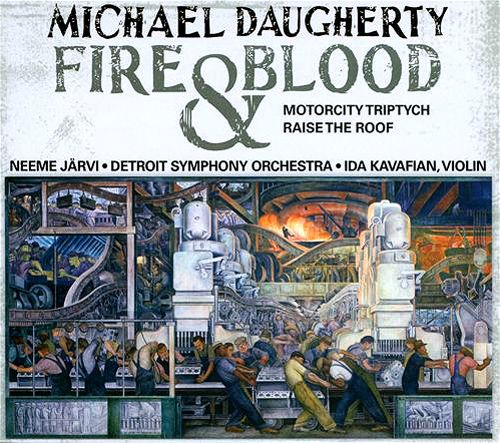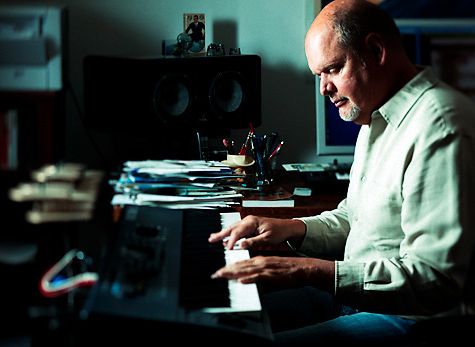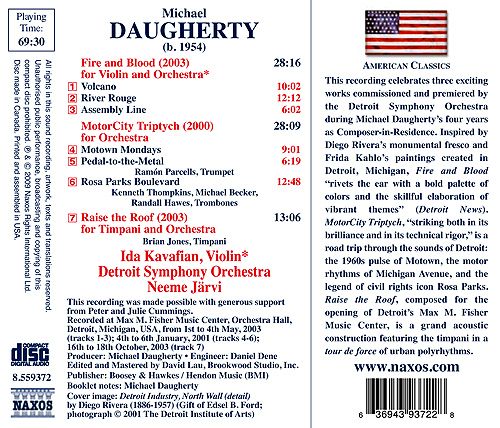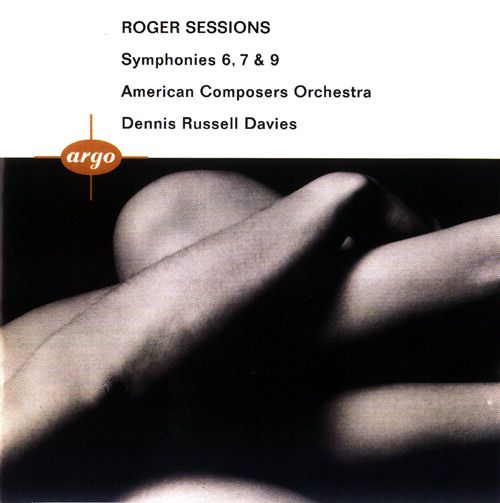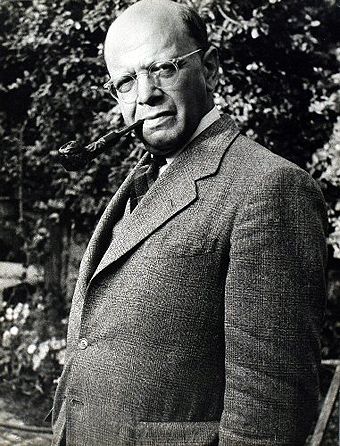No.650
In August of 1941, two months after the German invasion of Russia, Sergei Prokofiev and
other Soviet artists were sent to Nalchik, in the Northern Caucasus, to keep the away from the
coming attack upon Moscow. The composer took with him the score of The Year 1941, begun a
month earlier; it was completed in Nalchik in the fall. This three-movement orchestral work depicts
the invasion of the U.S.S.R. and foretells peace and the brotherhood of man. Curiously, this colorful
piece has not always found critical favor, despite its strong thematic and rhythmic appeal and its
brilliant scoring. Shostakovich suggested that Prokofiev had not developed his material sufficiently,
and while there may be truth to the observation, it fails to take into account that this is music
intended primarily to bolster courage and arouse the patriotic spirit. The first movement, entitled
"In the Struggle," begins with furious martial music. The main theme, a typical Prokofiev concoction,
bounces and scampers about, half-playful, half-warlike. The music's energy seems unbounded in
its martial drive, only yielding in the latter half to a march-like theme of simple scoring. The second
movement, "In the Night," features a lovely descending theme on flute and a serene, nocturnal
atmosphere, interrupted by tense, swirling strings in the alternate material. The finale, titled
"For the Brotherhood of Man," is grandiose and features a closing theme of great beauty and
euphoric triumph. This work lasts about 15 minutes and while its music is not profound, it is
attractive and has moments that rise to truly inspired levels. One might view it as a testing of
the waters for Prokofiev as he developed a wartime idiom -- but that idiom found favor neither
with musical cognoscenti nor with the Soviet government.
Prokofiev often exhibited a tendency toward extravagance in his larger scores. Looking at
the instrumentation listed in the headnote above, one more than suspects that the
Ode to the End of the War be an example of that tendency. Much more than that, it is
an unforgettable aural experience in concert or on record. Within the first minute, the colorful,
boisterous nature of this score leaves the auditory senses flabbergasted by blaring fanfares,
powerful stokes of percussion, and finally pianos hammering out a rhythm while the brasses
proclaim the victorious theme. It is this melody that is the strongest element in this unusual
composition. Played mainly by trumpets and trombones, it is a long-breathed theme that
rises and falls in several places along its crushingly glorious path. A second melody soon
follows, lively and joyous in mood, and more lightly scored. This, as well as the blithely
nonchalant tune that constitutes the largest portion of the middle section, first appeared
in the ninth movement, "Symphony," of Prokofiev's Cantata for The 20th Anniversary of
the October Revolution, a composition whose satire on the regime and bold scoring kept
the composer from seeking a performance in his lifetime. The Ode ends with a bombastic
restatement of the main theme and a blaze of uproarious trumpeting, which seems to
imitate the cackling and laughing of relief from suffering more than evoking victory.
In spite of its fairly considerable artistic merit, the Ballad of the Boy Who Remained Unknown
is rarely encountered in either the concert hall or on recordings. The composer employed a text
by Pavel Antokolsky that recounts a heroic act during World War II by an unnamed Russian boy
who, to take vengeance against the Nazi invaders for killing his mother and sister, blows up their
commander with a grenade in a suicide mission. The work opens with a soft but ominous marching
rhythm, as if soldiers are approaching at a great distance. Two themes are soon introduced,
the militaristic first associated with the Nazi invaders, the second overwrought with anguish
and anxiety. The tenor and chorus enter and the march rhythm grows more insistent, the
chorus more fanatical. There follow several long lyrical sections involving the soprano and
tenor soloists, wherein the latter tells of the story of the "unknown boy." Dark clouds soon
appear again: a brutal, colorfully orchestrated buildup midway through based on the invasion
theme initially climaxes in the powerful return of the second theme, but after a brief reprise
of materials from the opening another buildup leads to a more agitated episode, wherein the
invasion theme sprinkles its morbid militarism about the sonic canvas until the music is
worked into a frenzy. Here the beautiful consoling closing theme makes two brief appearance
s before yielding to reminiscences of earlier material. The theme soon returns and the
epilogue that closes the work imparts a sadly triumphant manner: the music touchingly
conveys the tragic loss of the boy in his heroic act, but also his inspiration to the Russian
soldiers to carry on in their mission to cast out the Nazi invaders.
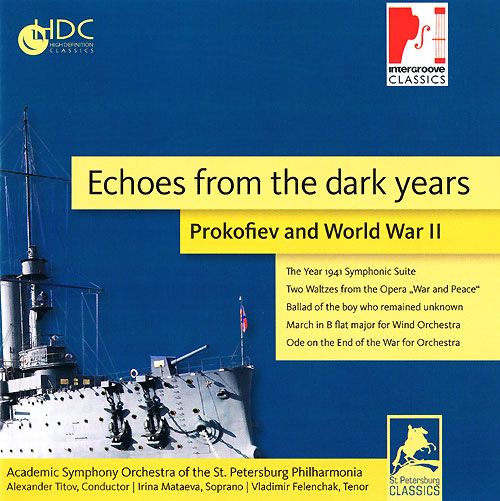
Music Composed by Sergei Prokofiev
Played by the Academic Symphony Orchestra of the St. Petersburg Philharmonia
With Irina Mataeva (soprano) & Vladimir Felenchak (tenor)
And the Student Choir of St. Petersburg's Rimsky-Korsakov Conservatory
Conducted by Alexander Titov
"This set collects orchestral works written by Prokofiev during World War 2 (which
the Soviets called the Great Patriotic War), focusing on minor works rather than those
which are more readily available. As with the previous collection, most of these works
were written in response to "official" commissions.
I have previously heard Kuchar and Rozhdestvensky's recordings of the suite "The year
1941". I marginally preferred Kuchar, but neither was satisfactory. Listening to Titov's
recording, I smiled and said, "THIS is PROPER Prokofiev." Titov just seems to get to
the heart of Prokofiev's wry sensibility and distinctive sound better than the others. To
nitpick, I would say that some parts of the last movement could have been taken
fractionally slower, and the final chord should have been extended.
The two waltzes from War and Peace are well done, but then they usually are. I prefer
them in the context of Prokofiev's complete Waltz Suite (or the original opera).
Prokofiev's cantata "Tale of the Boy who remained Unknown" (as it is called here) is
the longest work of the collection. I wouldn't call it a major work, but is certainly a
respectable achievement and not a cynical propaganda piece. Structurally it is
interesting for the grim march beat that underlies most of the music, while the
tenor, soprano and chorus provide dramatic recitative. With its strong narrative
focus, I think this is a work that would really benefit from performance in an
English translation.
I also have a recording of this work conducted by Rozhdestvensky. That recording
is more vivid than Titov's, with a wider stereo spread, and Rozhd perhaps shifts
more convincingly into the final peroration. On the other hand, his tenor, while
very passionate, is strained and occasionally of uncertain intonation. Titov's
tenor is more beautiful. Rozhdestvensky takes the opening and several other
sections at too spritely a pace for my tastes; I think a grim trudge is more
appropriate (from his timing, Polyansky may be even quicker in his version).
(I should add: I think it's possible that a blockbuster performance might
dramatically boost my valuation of this work. Sadly, as so often with Prokofiev,
we are lucky to have any choice of recordings at all.)
The March is a minor piece, representing Prokofiev's take on the military band
number. The quirkier elements are brought off with much verve, but its
situation near the end of the program breaks up the dramatic flow of the CD,
and I think it would have been better placed as an introductory piece.
The "Ode to the End of the War" is often described as a weird piece, not just
for the outlandish orchestration (the effect of which is mostly lost in the audio-
only format) but for the enigmatic attitude of the music. The opening march
couldn't be described as celebratory, nor as a lament; the rhythm is lumbering
and the melody is curiously blank, apparently expressing nothing stronger
than wry bemusement. Following this, Prokofiev introduces a busy theme
borrowed from the "Symphony" movement of his October cantata. As this
was a purely instrumental section, its thematic associations remain unknowable.
Later there is a long quiet section reminiscent of a frozen winter landscape.
(I have a feeling Prokofiev quotes from other of his Soviet works beside the
Cantata (i.e. Ivan the Terrible Part 1, On the Dnieper, the Winter Bonfire
songs), but I don't know those works well enough to assert this definitely.)
Soundwise, this surpasses Rozhdestvensky; artistically, the work remains
a freakish mystery."
Amazon Reviewer

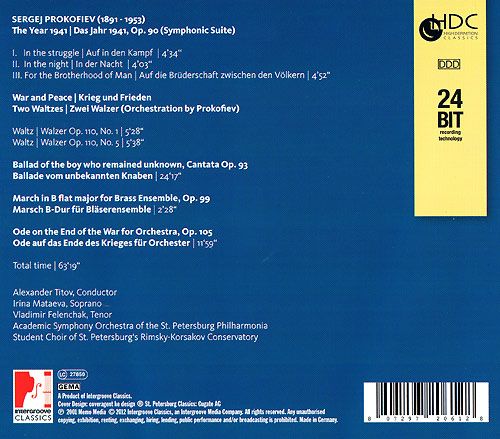
Source: Intergroove Classics CD (my rip!)
Formats: FLAC(RAR), DDD Stereo, mp3(320)
File Sizes: 333 MB / 150 MB (FLAC version incl. covers & booklet)
The FLAC link has now expired. No more requests for this, please!
mp3 version -
https://mega.co.nz/#!aQJxTI7R!ZLELXXr7pqCJIb14zaUZvXKTPGeeRokA49cOwdc Wzvw
Enjoy! Don't share! Buy the original! :)
---------- Post added at 01:20 PM ---------- Previous post was at 12:52 PM ----------
No.651
While Sergei Prokofiev ultimately spent 11 years on the opera War and Peace, the bulk
of his work (ten of 13 scenes) was actually written in eight months, between late summer 1941
and early spring 1942. This effort comprised the first version, but the composer later added what
are now scenes 1, 2, and 10, and a choral epigraph, placed at the beginning of part 2, between
scenes 7 and 8. In addition, political pressures from Soviet cultural authorities prevailed on him to
further beef up the "War" half of the opera, and to enlarge the role of Field Marshal Kutuzov, who
could be seen as a counterpart to Josef Stalin. Later, film music and Prokofiev expert Chris Palmer
drew a concert suite from the opera.
Prokofiev typically wasted little time in extracting a suite or other concert piece from his larger dramatic
works, but it took him ten years to get around to producing this effort, drawn from his 1940 comic
opera, Betrothal in a Monastery. That decade gap had the effect of causing him to lighten the
spirit of his material even further. Thus, while the source work was designed in the tradition of eighteenth
and early-nineteenth century opera buffa, it takes its humor seriously and features music with some bite
and satire. The Summer Night Suite, however, smooths over just about every edge and even
tempers the love music from lightly passionate in the opera to playfully light here.
There are two versions of the Russian Overture; the second, from 1937, amounted to a reduced
scoring made by Prokofiev in answer to unfounded criticism that the original was too thickly orchestrated
and aurally overpowering. It is certainly true that the first version of this composition achieves massive
sonorities and huge washes of sound, but its folkish colors and nationalistic character justify the large
instrumental forces the composer called for. Most performances and recordings of the Russian Overture
have used the smaller scoring, probably for economic reasons rather than any artistic ones.
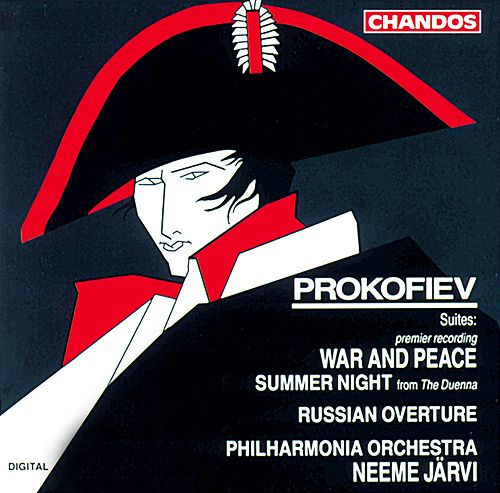
Music Composed by Sergei Prokofiev
Played by The Philharmonia Orchestra
Conducted by Neeme J�rvi
"Here is a very well-planned record of less familiar but vintage orchestral Prokofiev that provides
a highly stimulating appendix to the symphonic, concertante and balletic repertoire by this composer.
If you have been lucky enough to see the opera War and Peace (perhaps on television), you will
know what an out-and-out masterpiece it is, ranking alongside Romeo and Juliet in consistent
inspiration, and in its ambitious, epic scale perhaps even finer than that wonderful ballet score.
Like Britten's Peter Grimes it has some splendid orchestral interludes to extract, and this suite
has been selected skilfully and arranged by Christopher Palmer. (Prokofiev heard a concert
performance of the opera in 1944 but never saw the opera staged complete in his final conception.)
"Peace" is represented by "The Ball" sequence, with its "Fanfare", "Polonaise", "Waltz" and "Mazurka"
(very much in the joyfully lyrical Tchaikovsky Eugene Onegin tradition, though with touches of
Prokofievian irony); this section ends with a ravishingly delicate Intermezzo, "May Night", a
moonlit scene on the Rostov country estate. "War" is represented by the finale from scene 13
of the opera, which begins with a ferocious orchestral snowstorm as the French retreat from
Moscow (Prokofiev visualized "devils and Baba-Yagas whirling about the air, screaming, whistling
and howling"); then in the "Battle" sequence the soldiers are remorselessly harried by Russian
partisans. "Victory" brings a triumphant panoply of exultant melody, notably the great theme
associated with Marshall Kutuzov who masterminded the Russian victory.
The suite Summer night was arranged (in 1950) by the composer and is drawn from his opera
The Duenna (based on Sheridan's play). This music is essentially more lightweight and
has much in common with the ballet scores. The second movement, a romantic "Serenade",
and the delightfully fragile "Dreams" are the highlights. The Russian Overture dates from
1936, but is heard here in a more compact scoring for a smaller orchestra of a year later.
It is an extended piece, more like a symphonic poem, marrying lyrical elements with
typical grotesquerie, well spiced with dissonance. It is perhaps not top-grade Prokofiev,
but it is entertaining enough and it has a pervading energy, well caught by Jarvi, who is
thoroughly at home in all this music.
The Philharmonia play throughout the programme with plenty of bite and flair and
obviously revel in the more atmospheric sections of the music; the recording, sumptuous
and brilliant, uses the acoustics of St Jude's, Hampstead, to spectacular effect with
characteristic Chandos aplomb. Recommended."
Gramophone
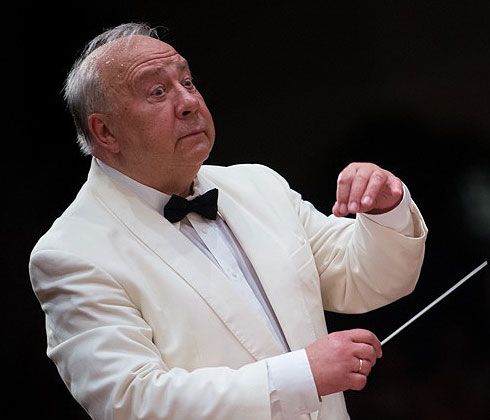
Source: Chandos Records CD (my rip!)
Formats: FLAC(RAR), DDD Stereo, mp3(320)
File Sizes: 295 MB / 149 MB (FLAC version incl. cover & booklet)
The FLAC link has now expired. No more requests for this, please!
mp3 version -
https://mega.co.nz/#!TYAkkaYR!g6JmYGJc_QyD-0i0l0m4ju2tnF7Egnlh3HUogQfoNjc
Enjoy! Don't share! Buy the original! :)


